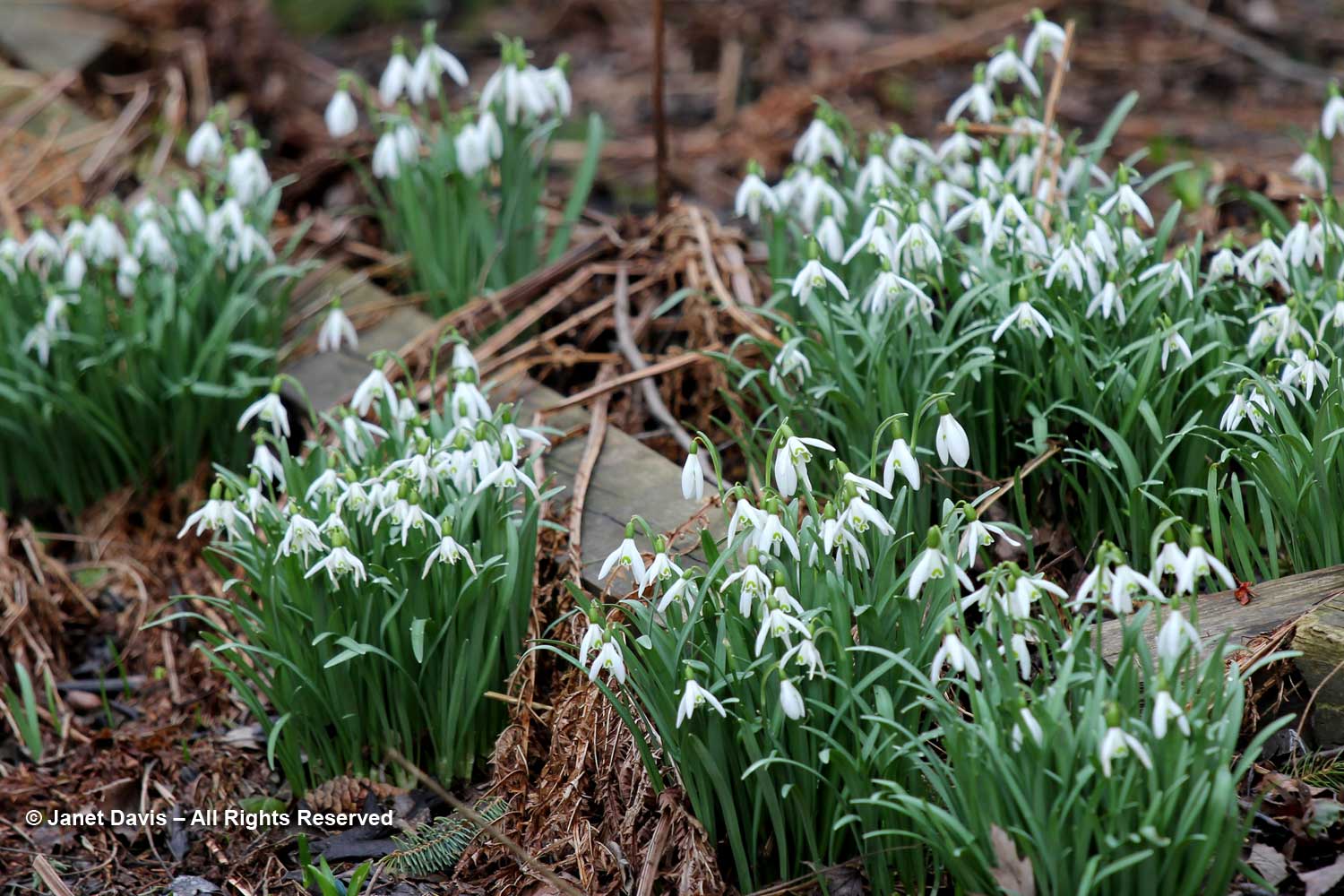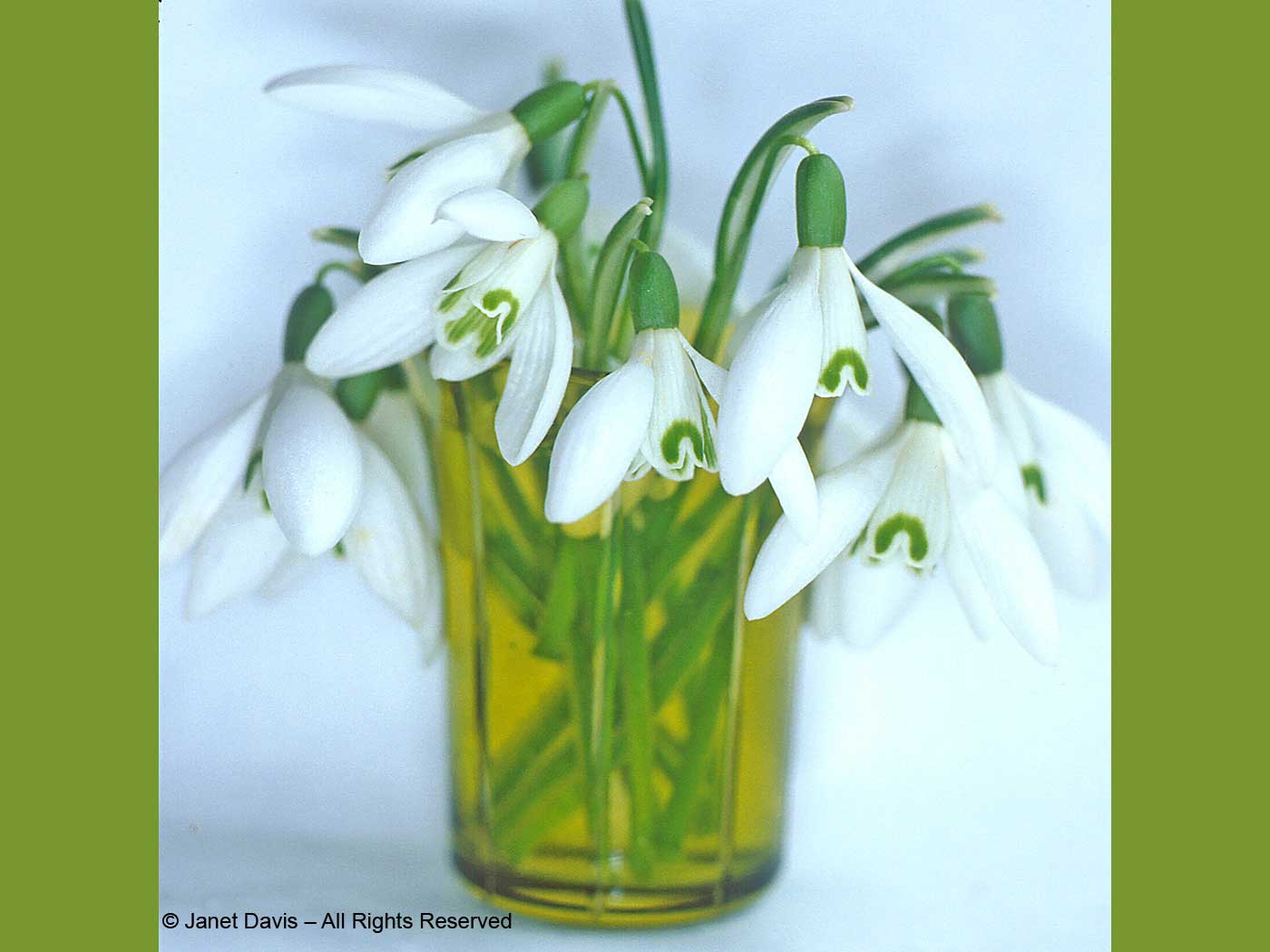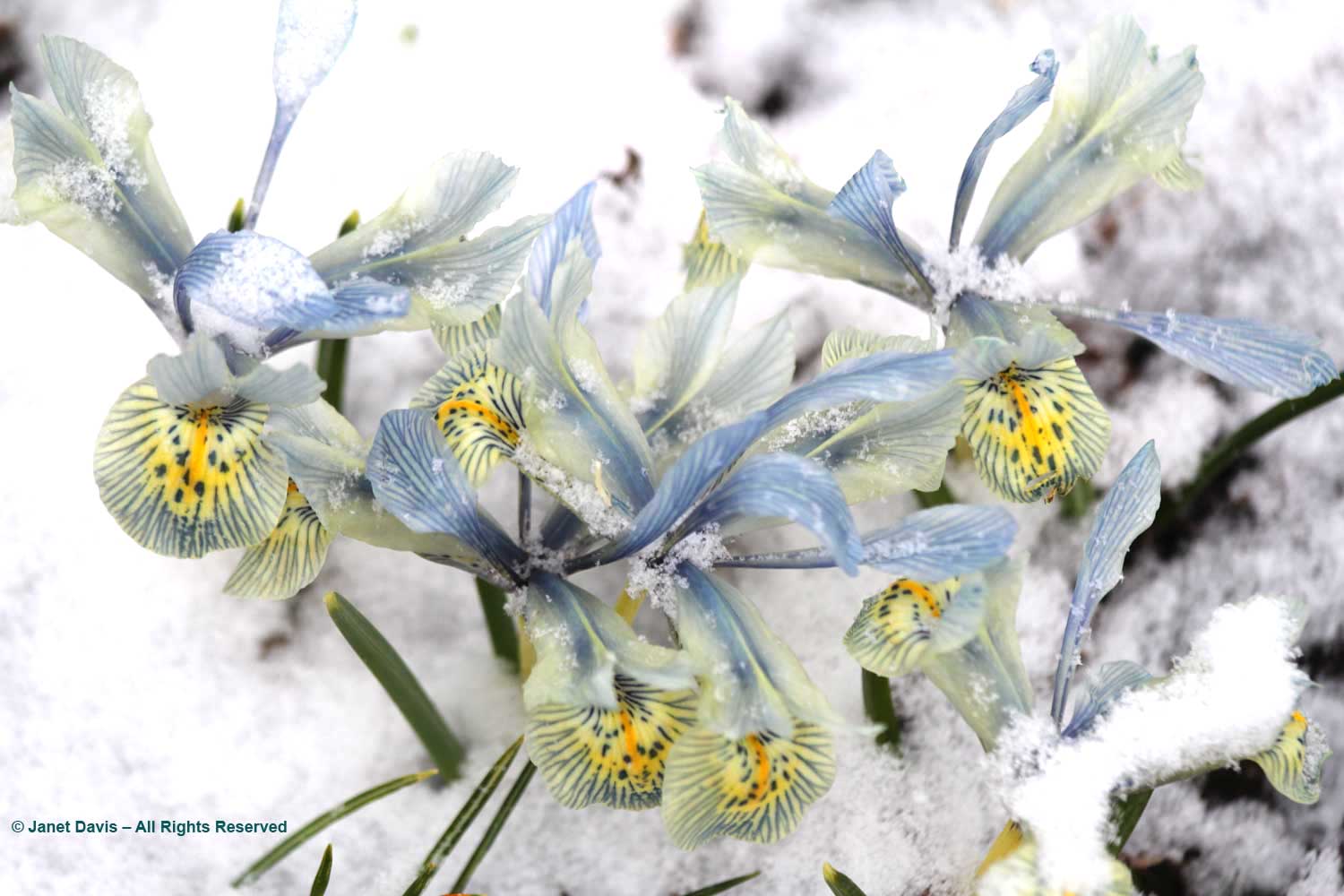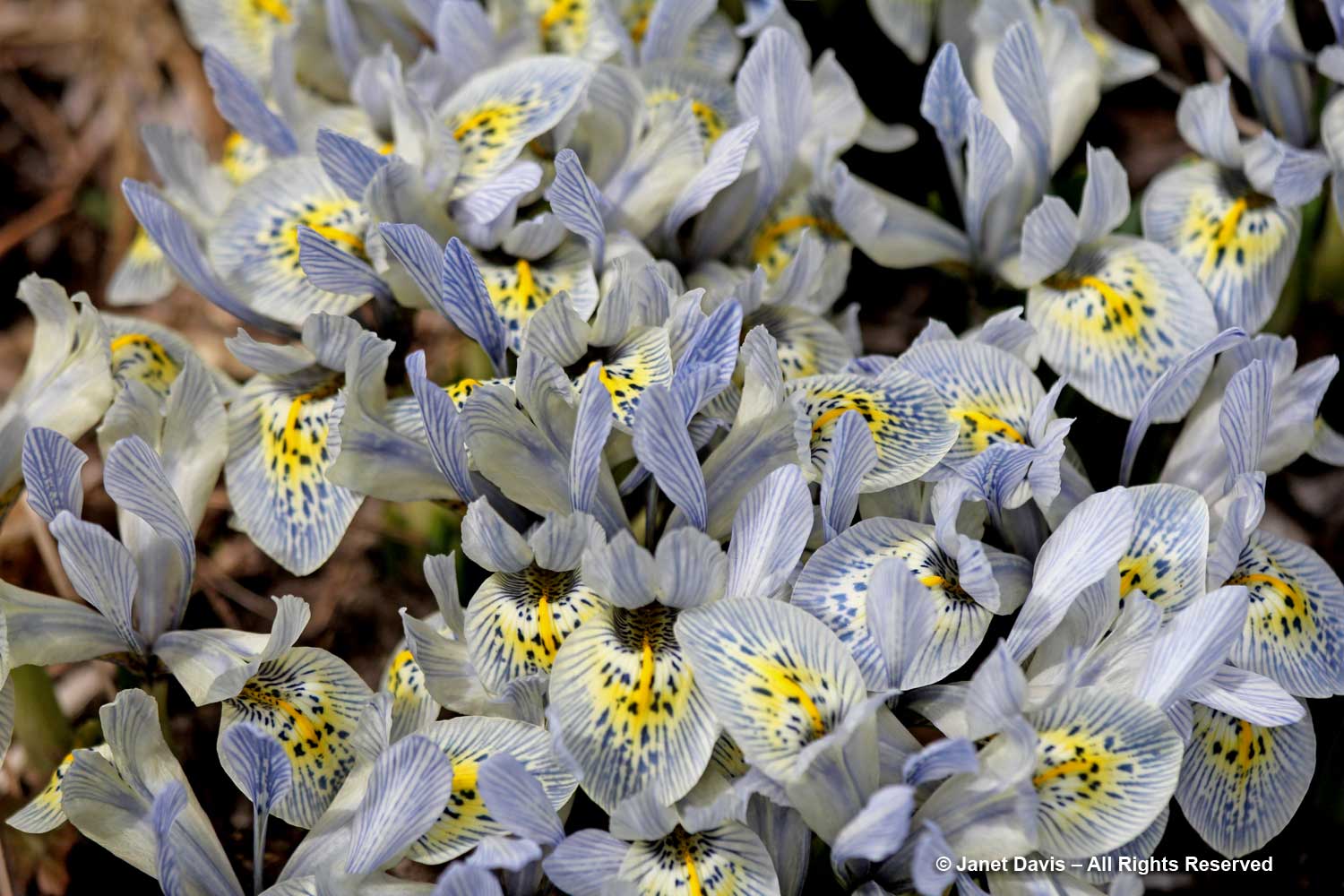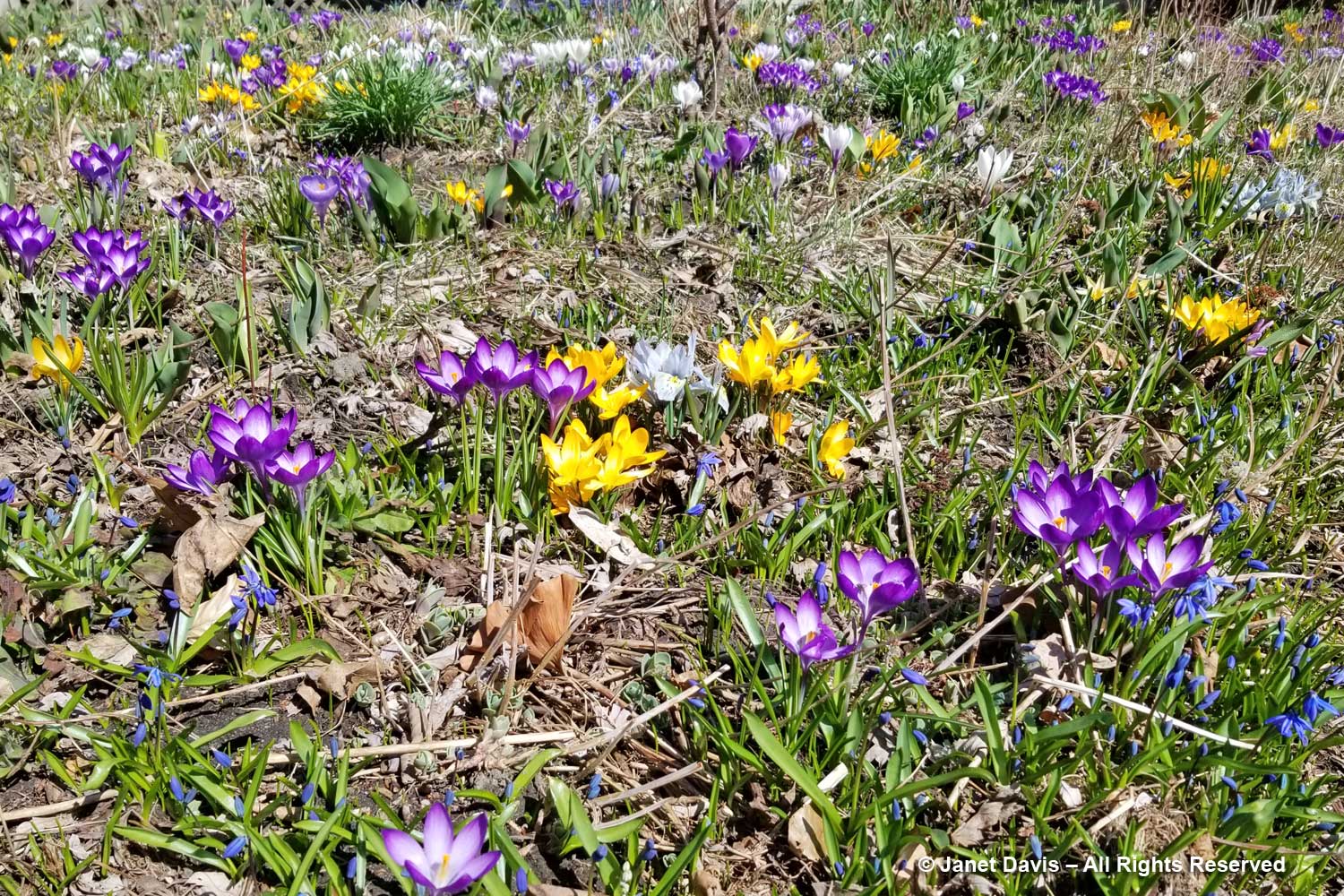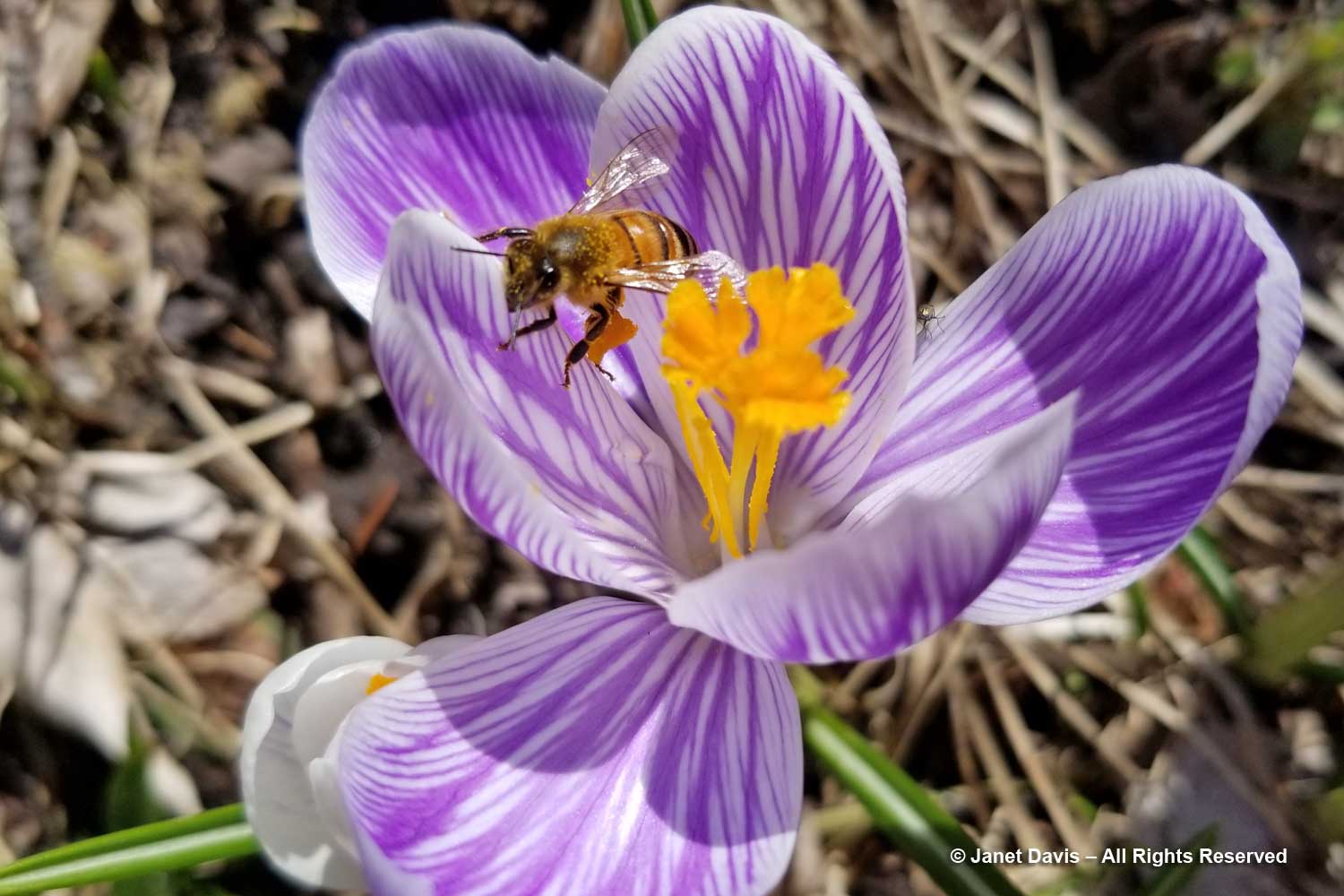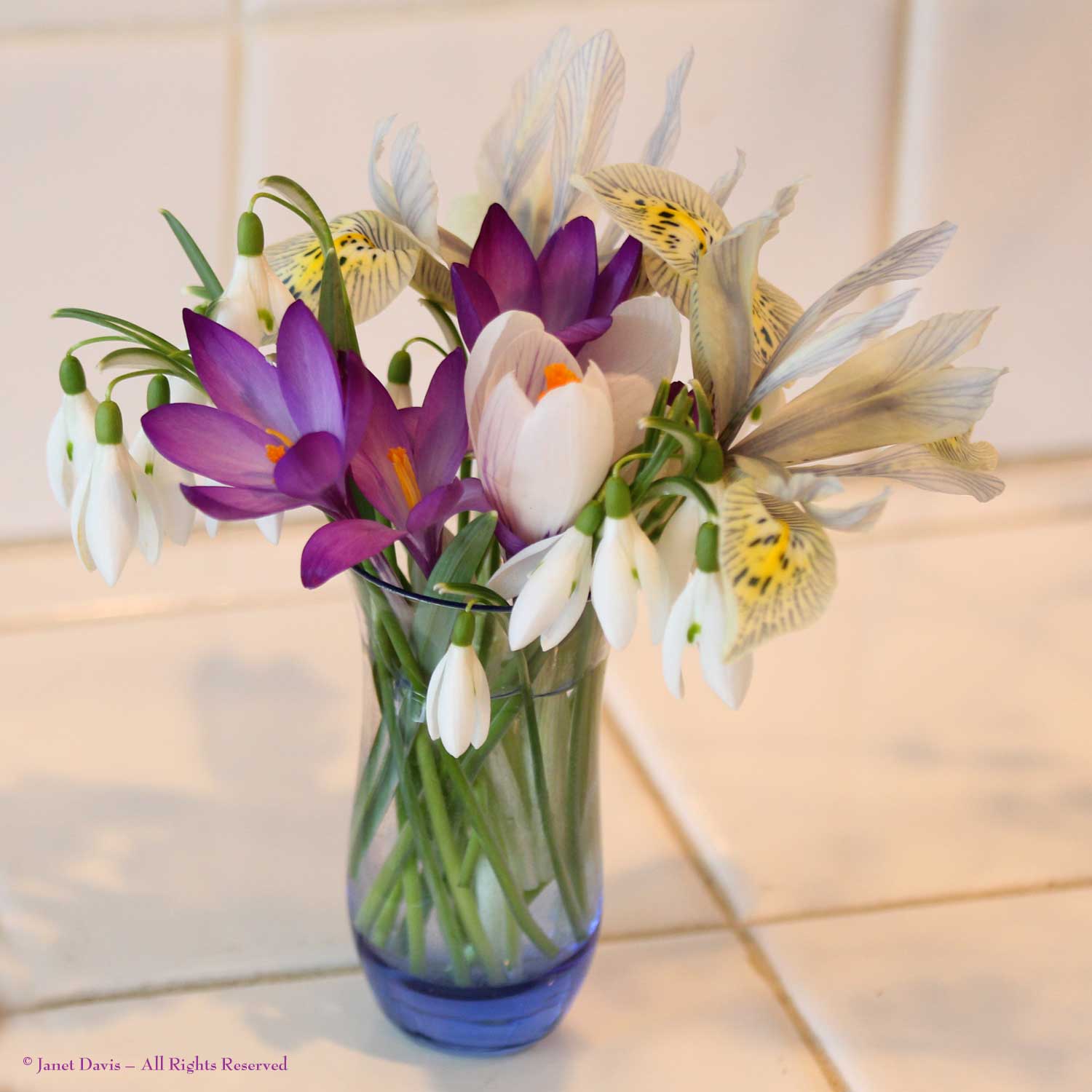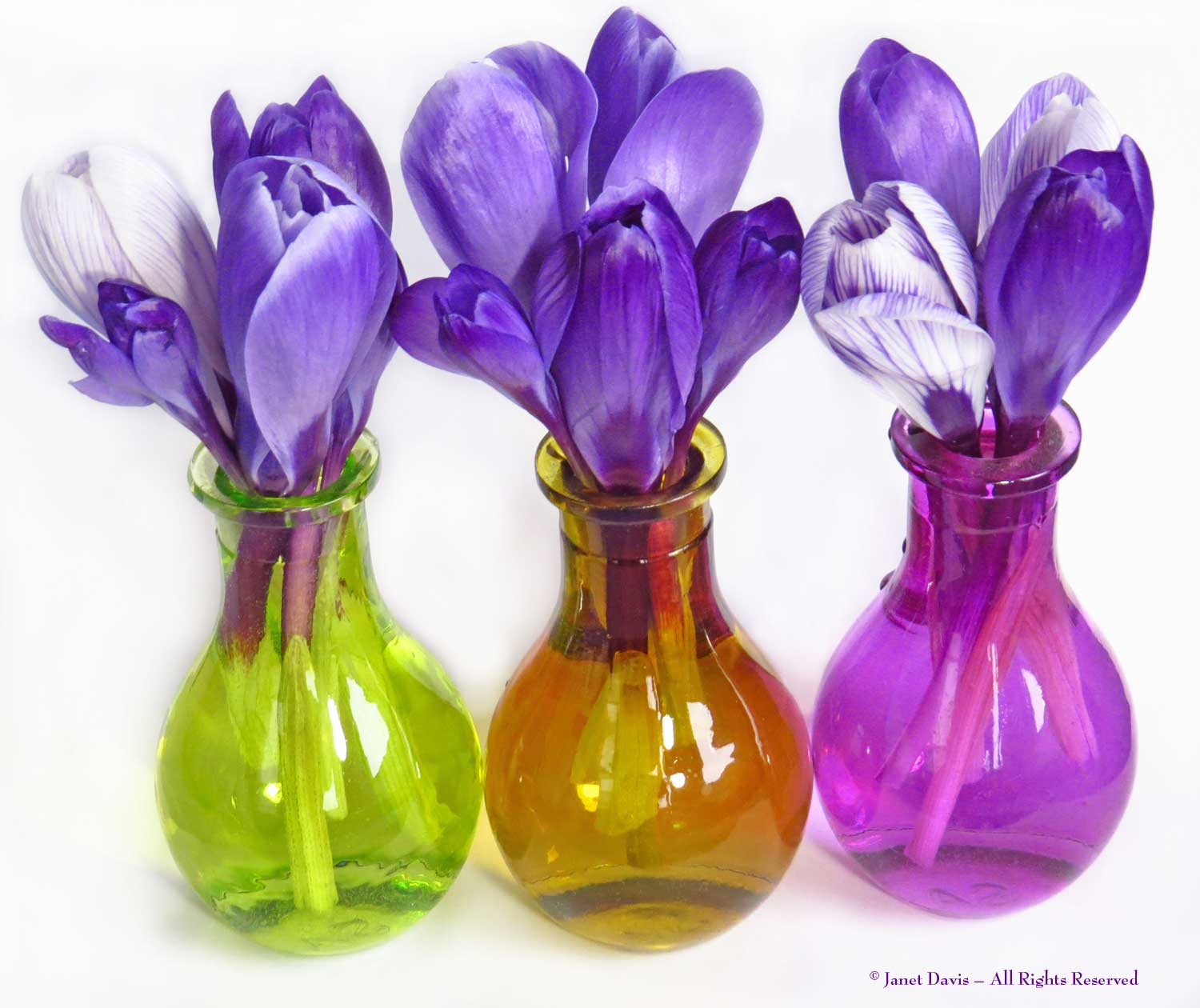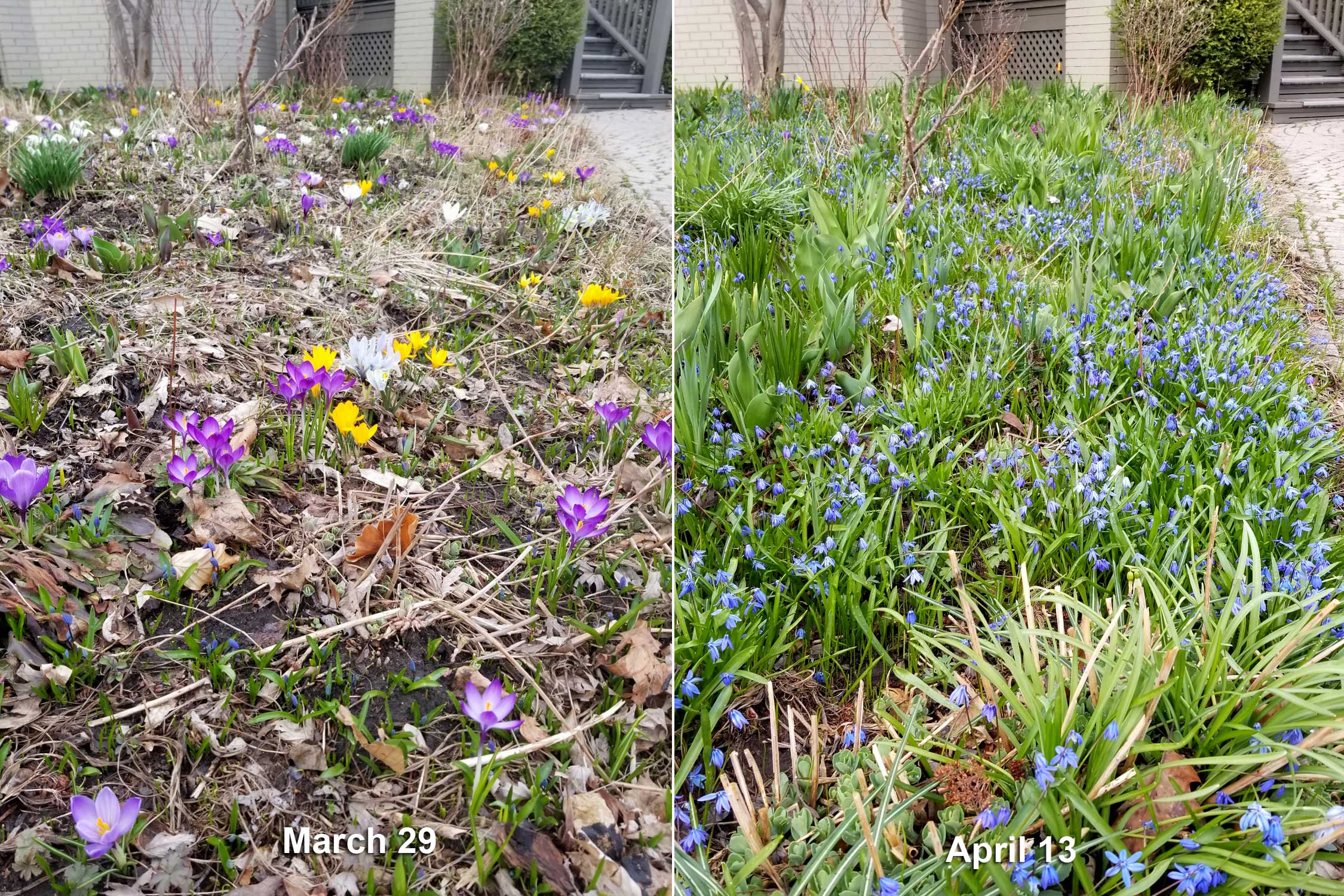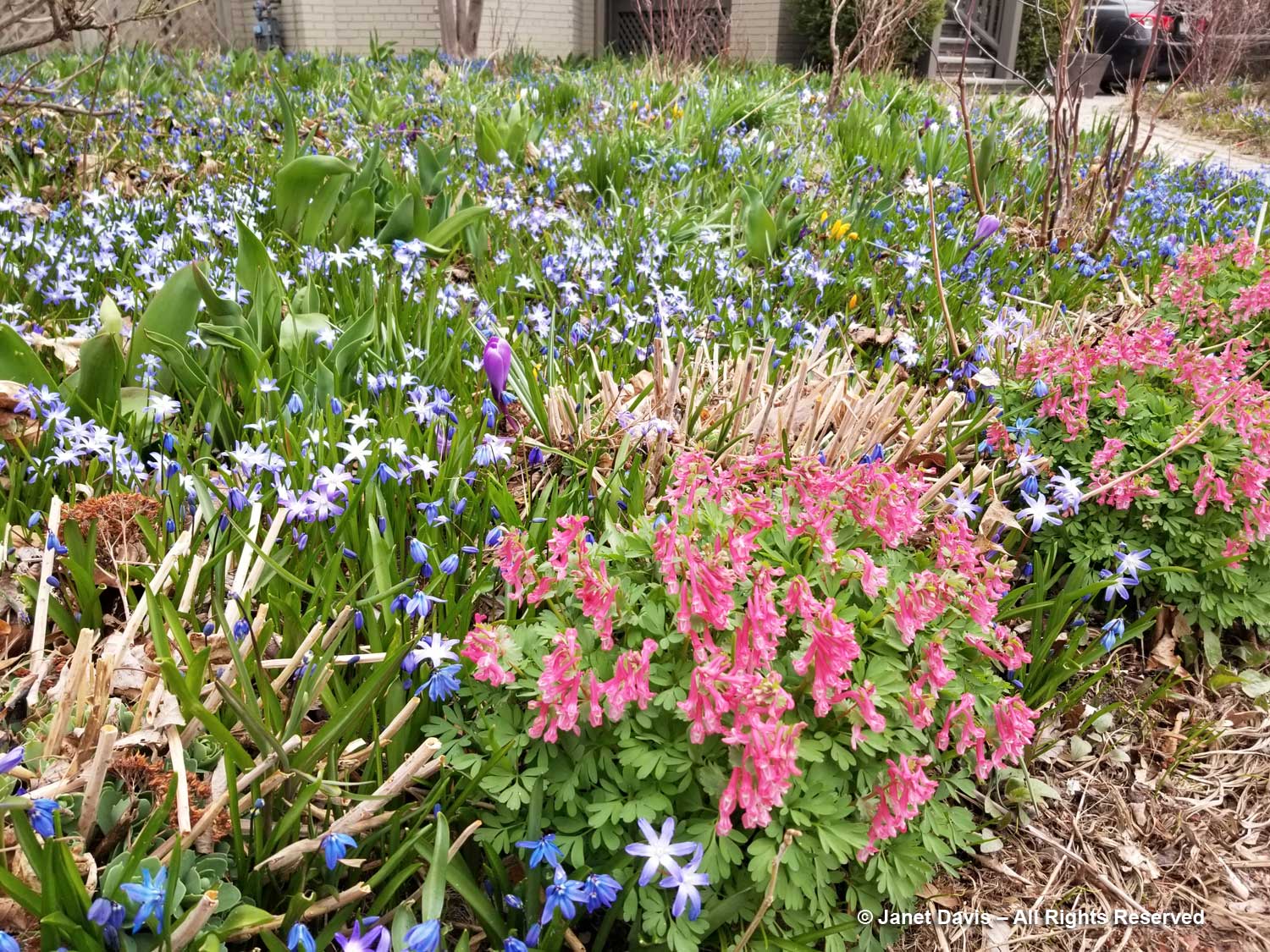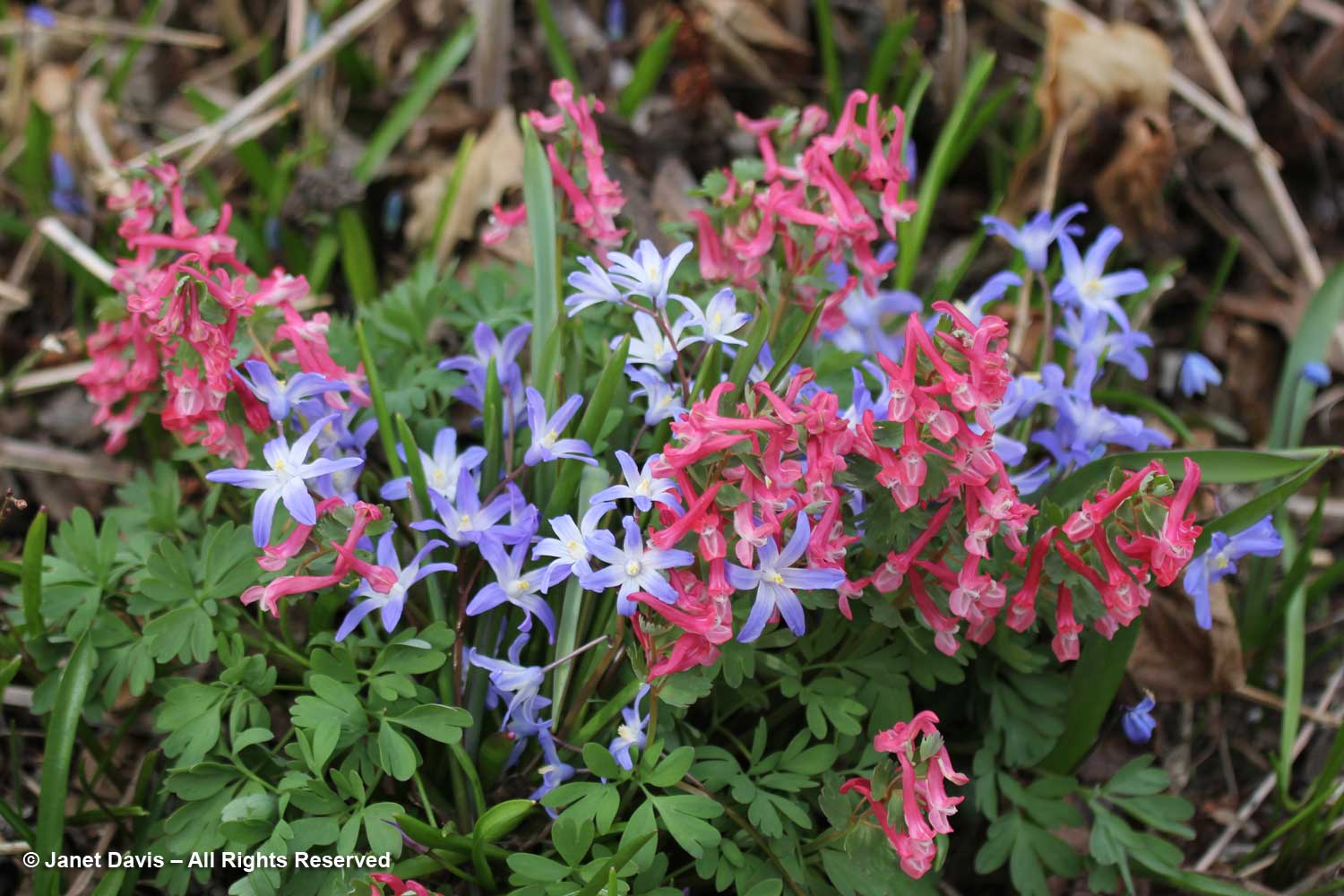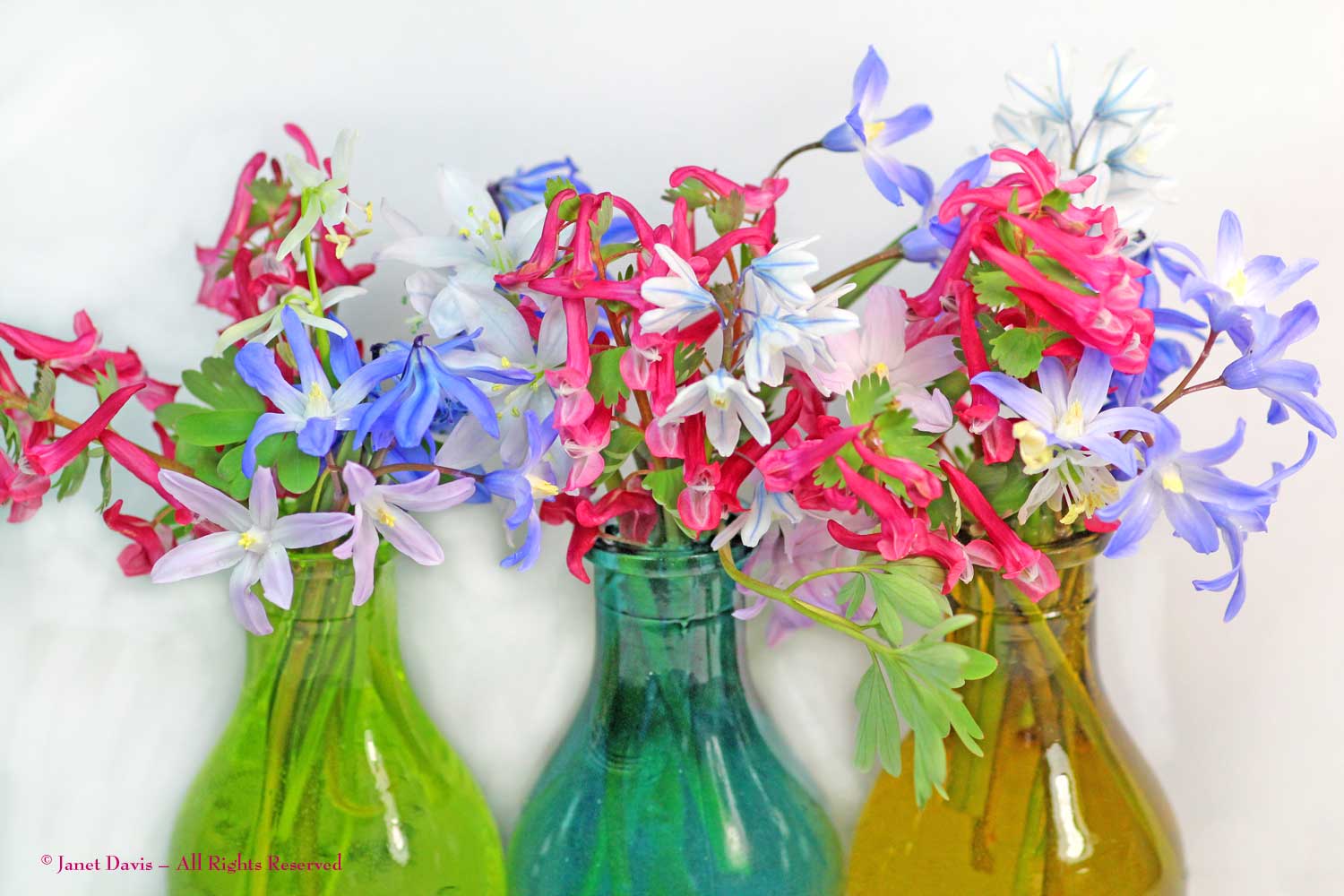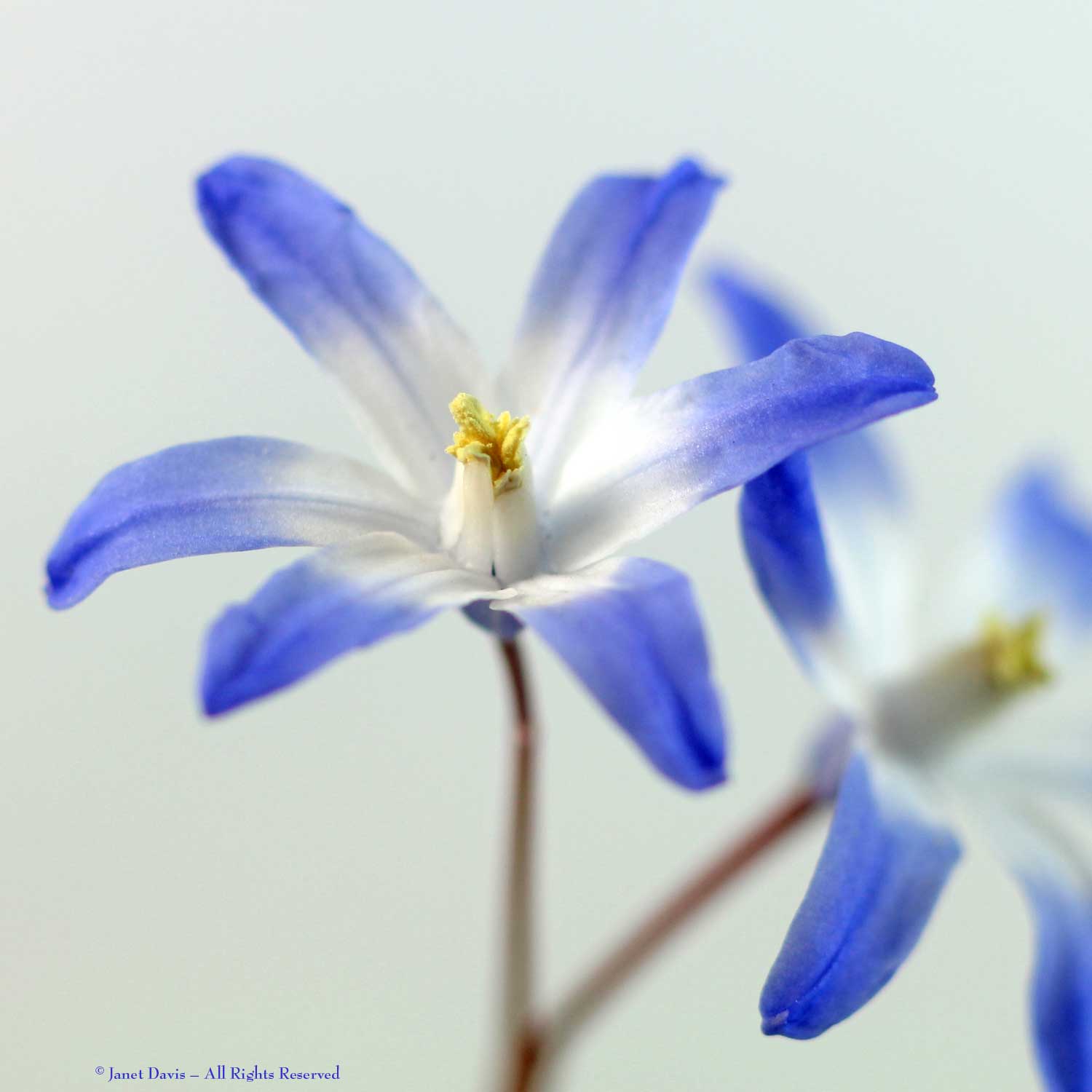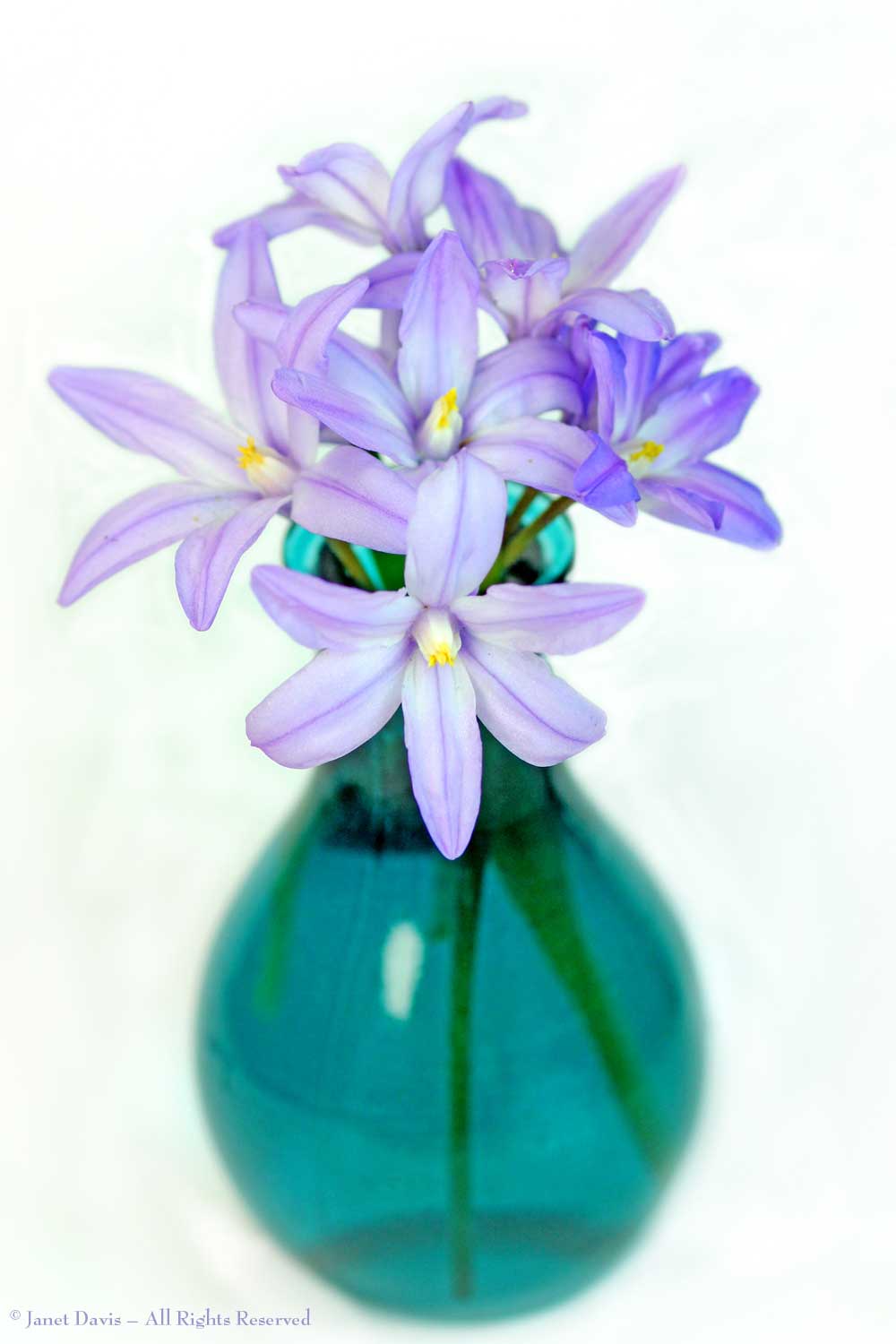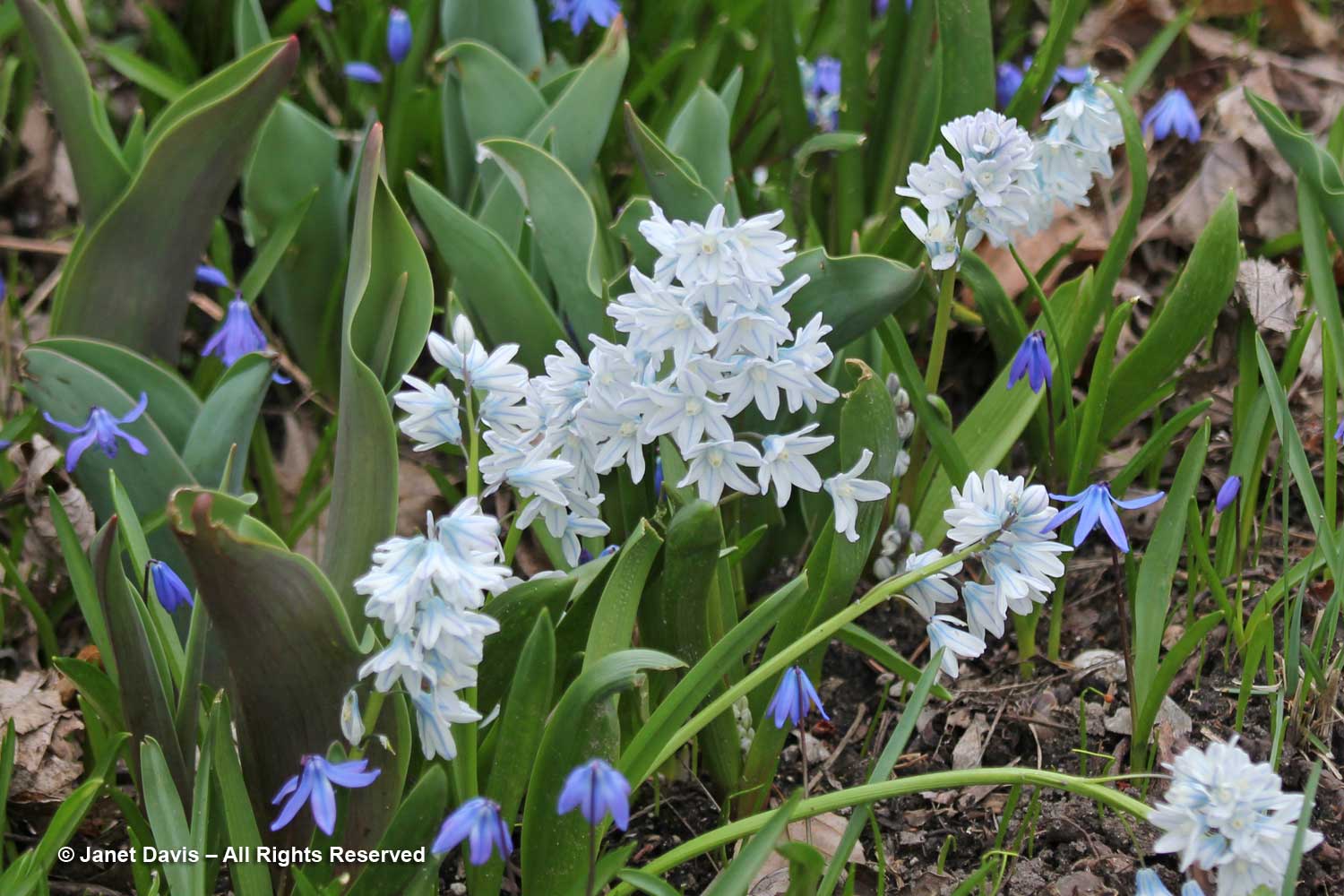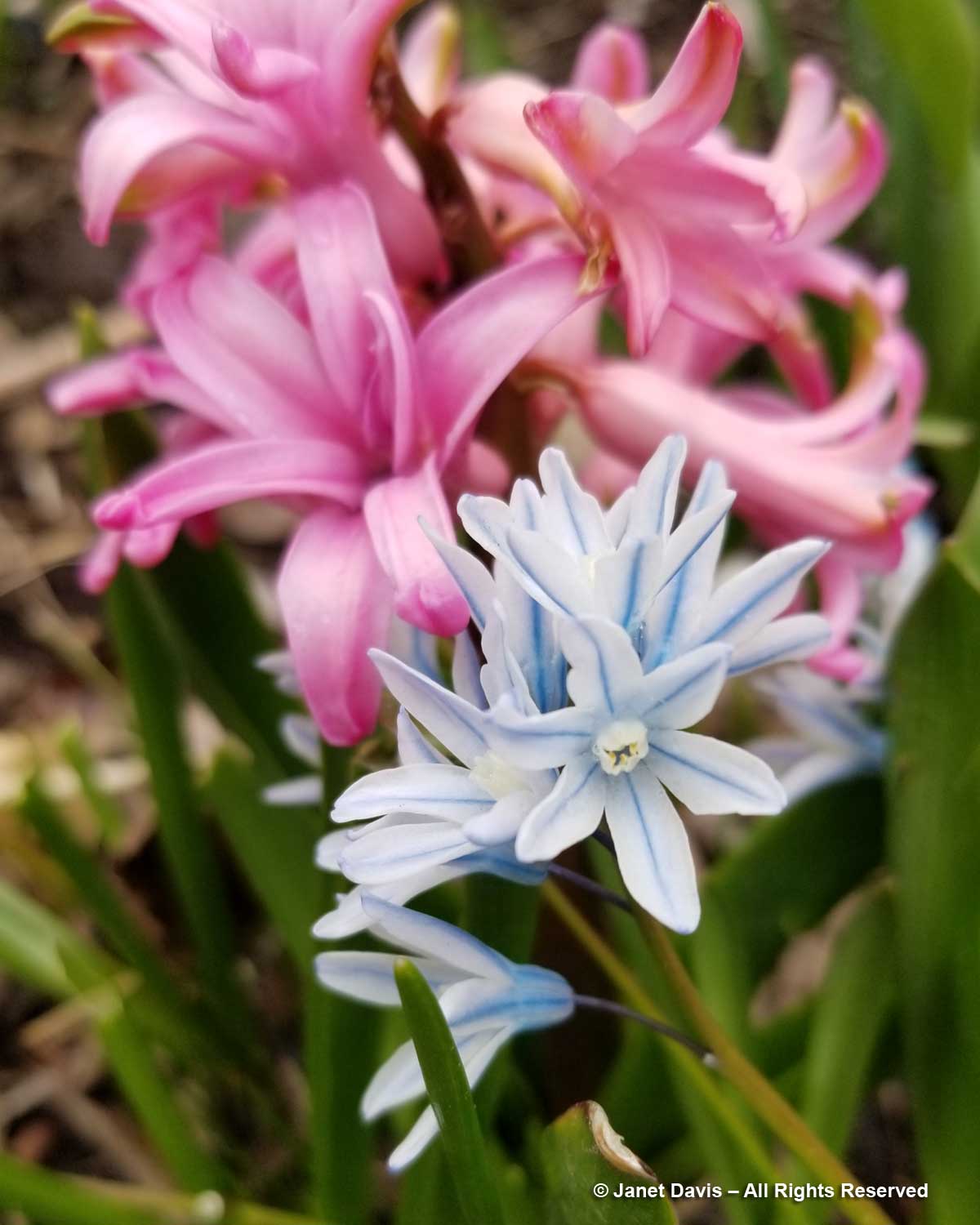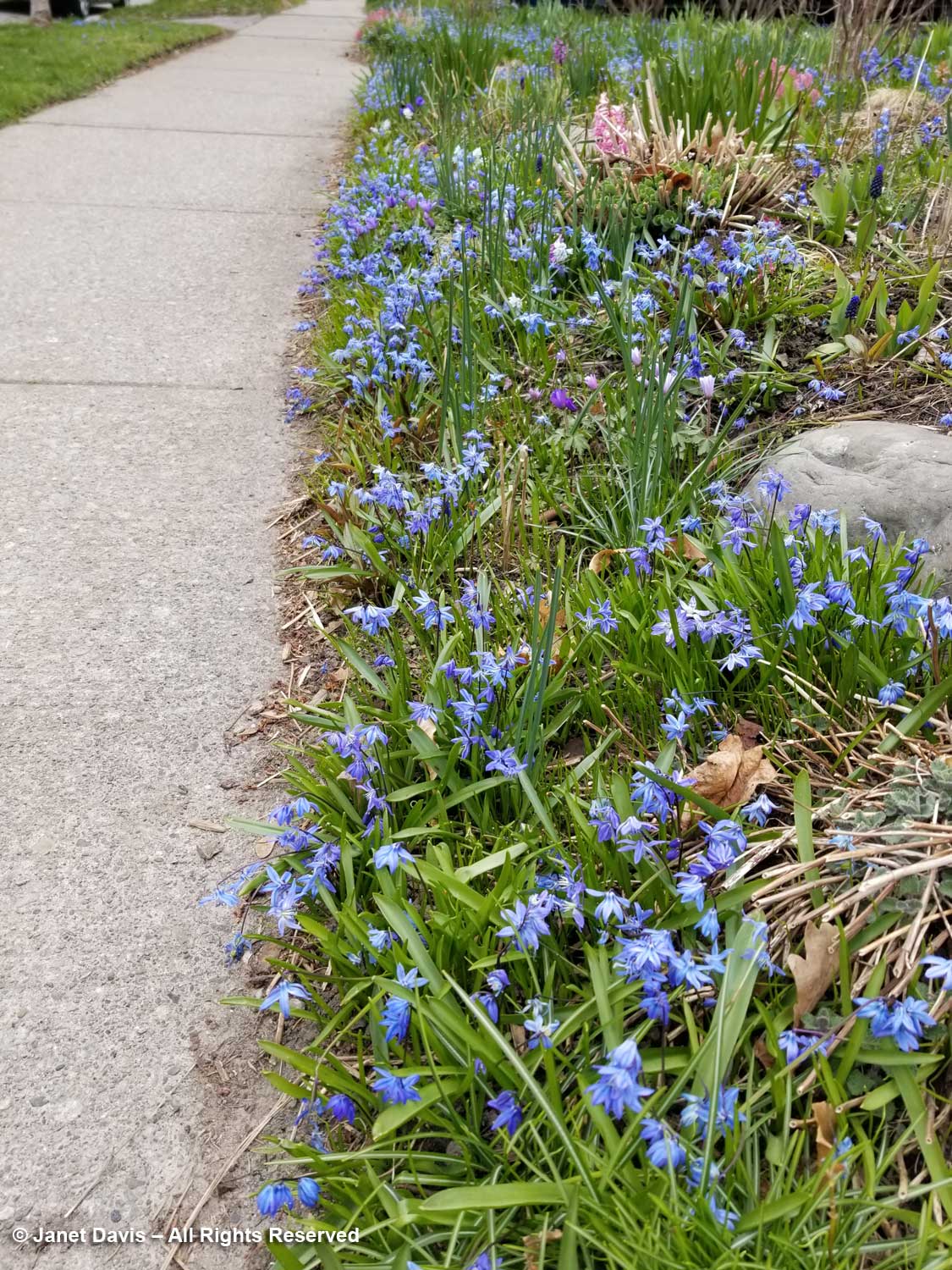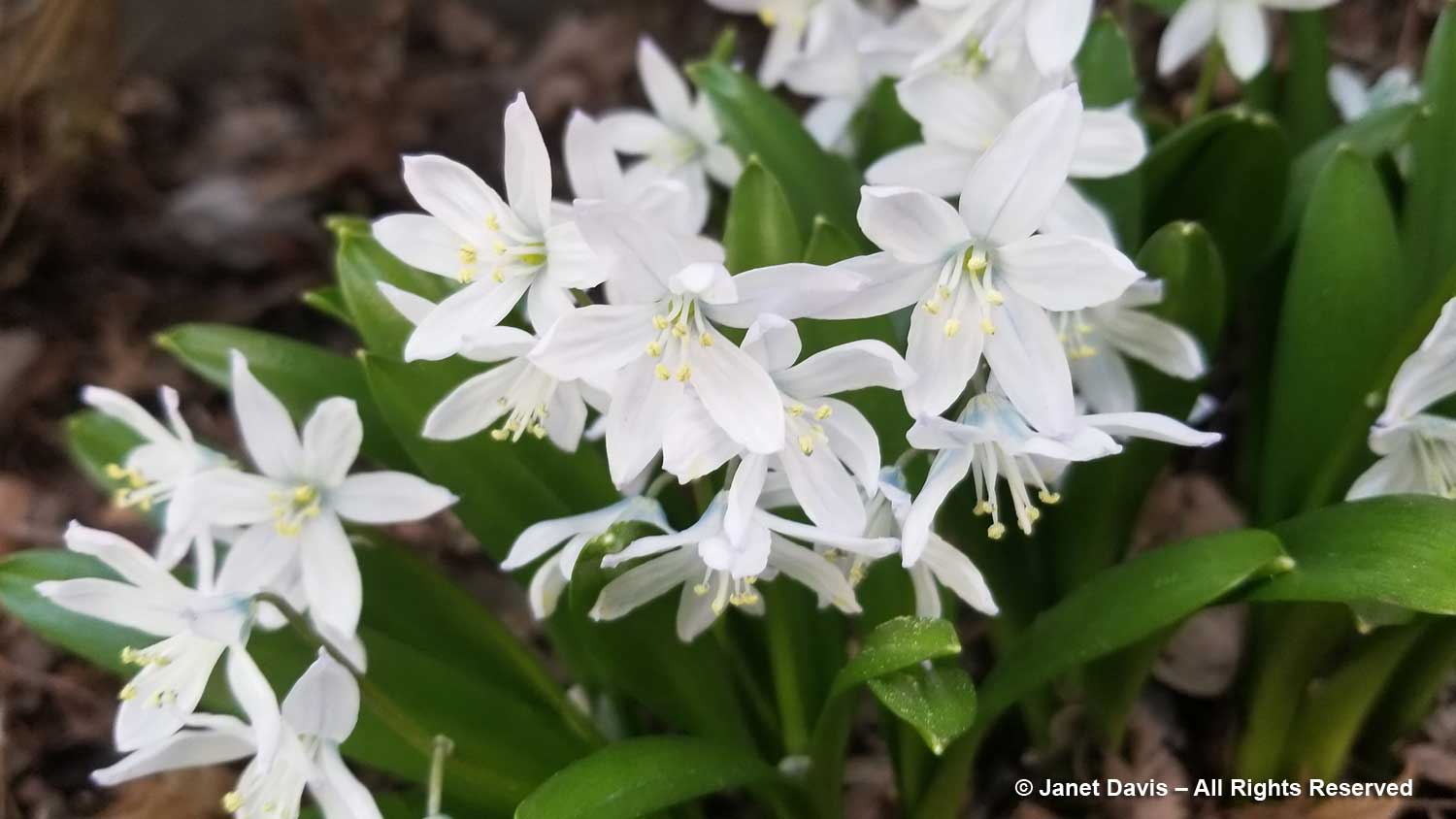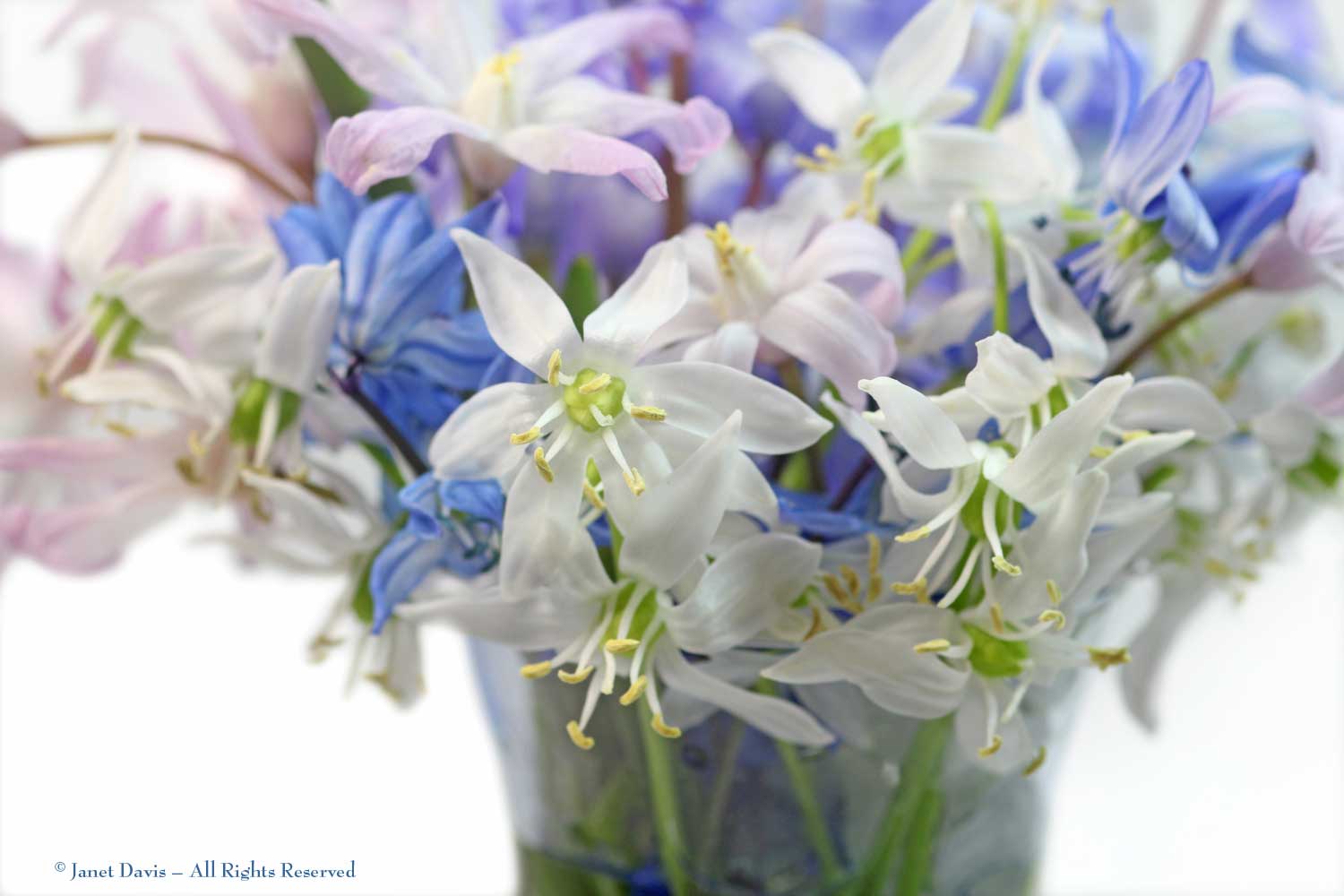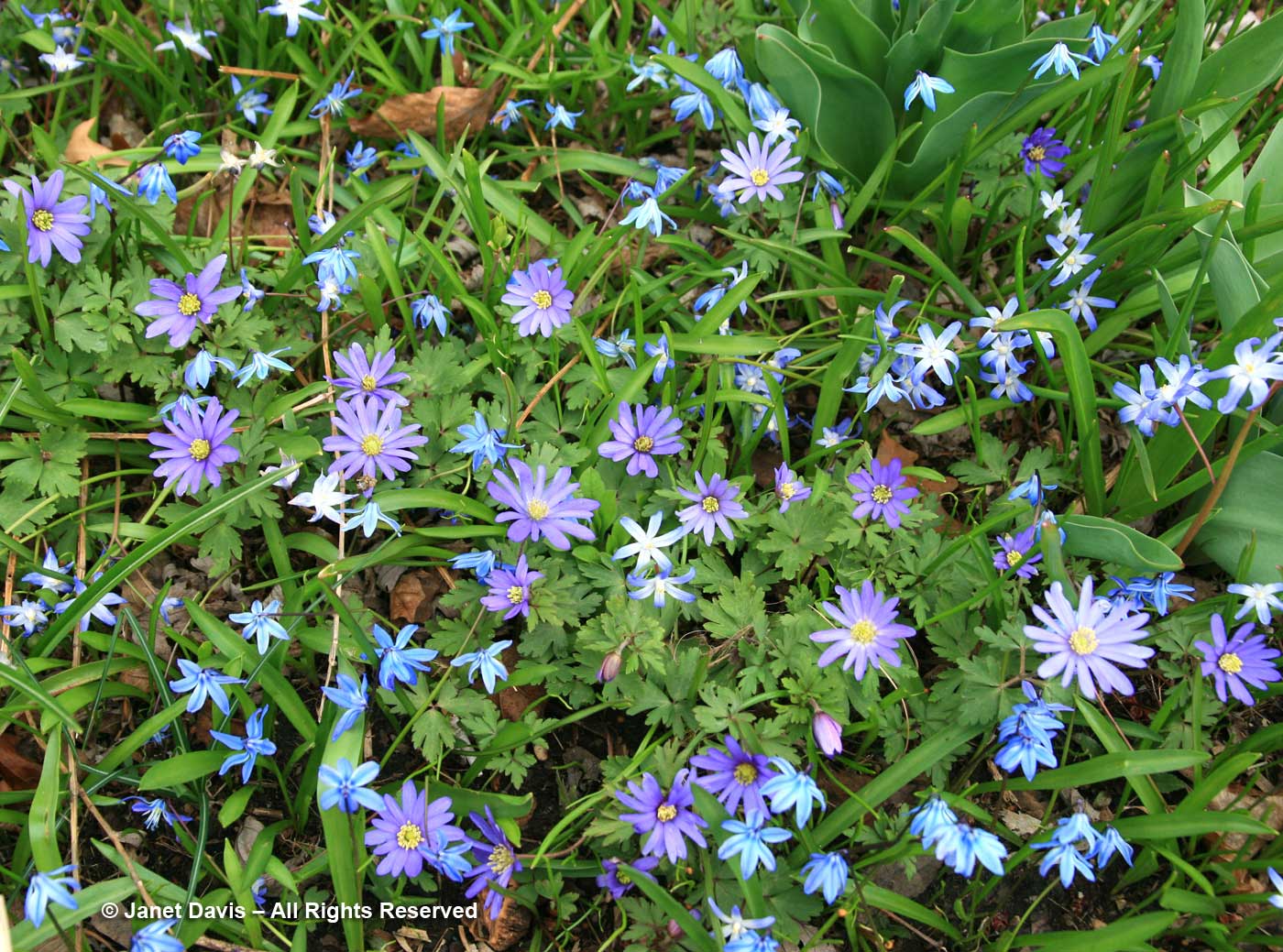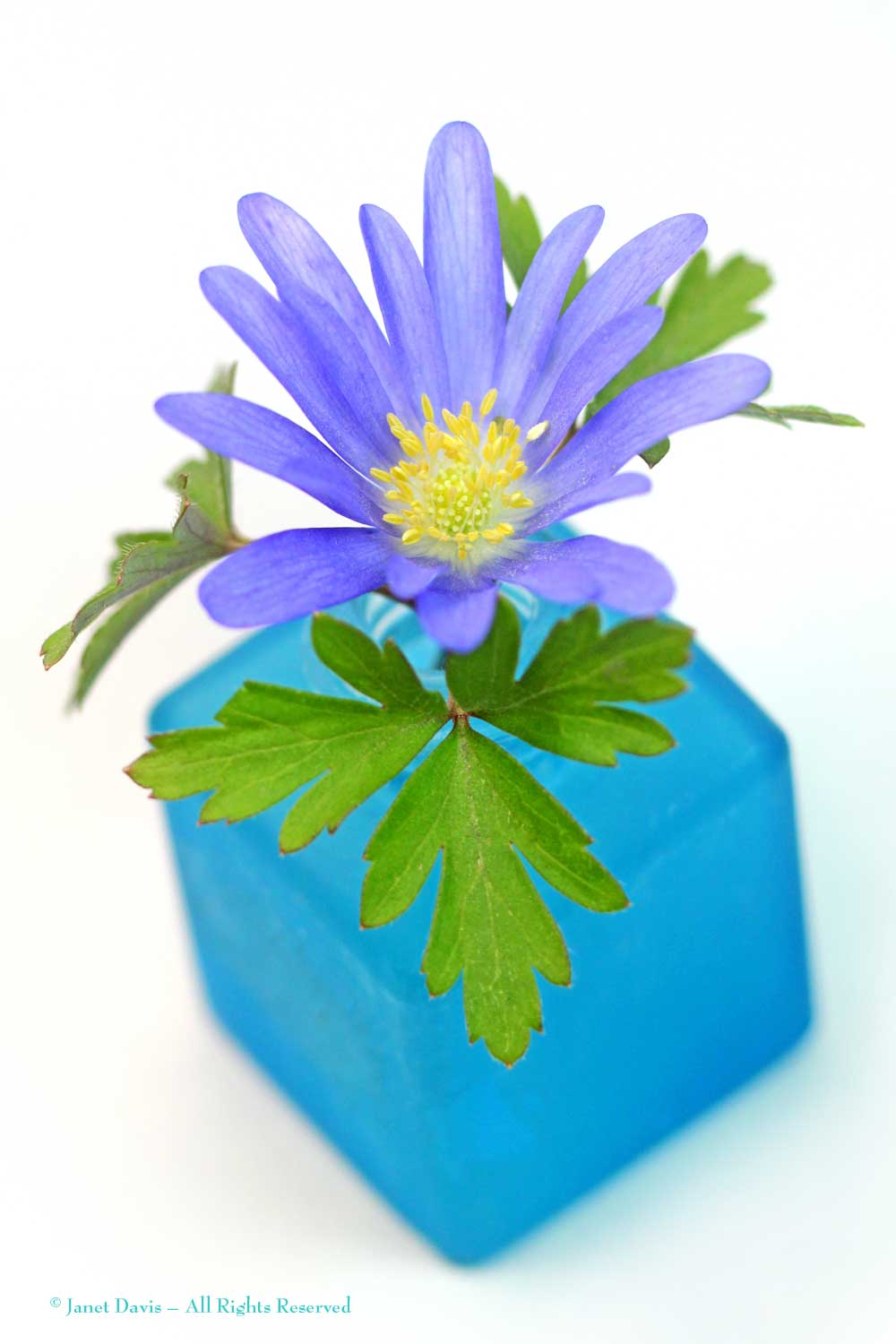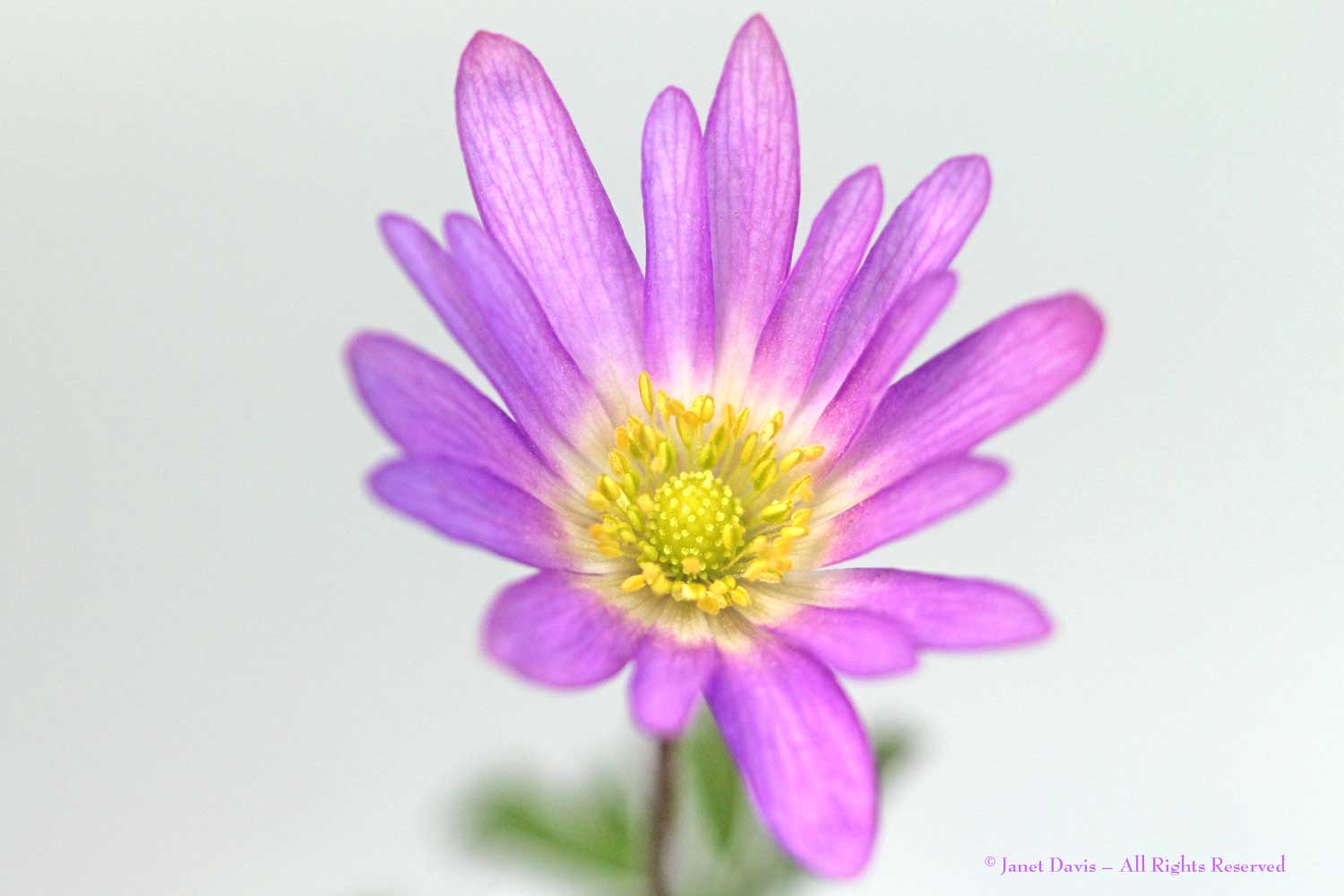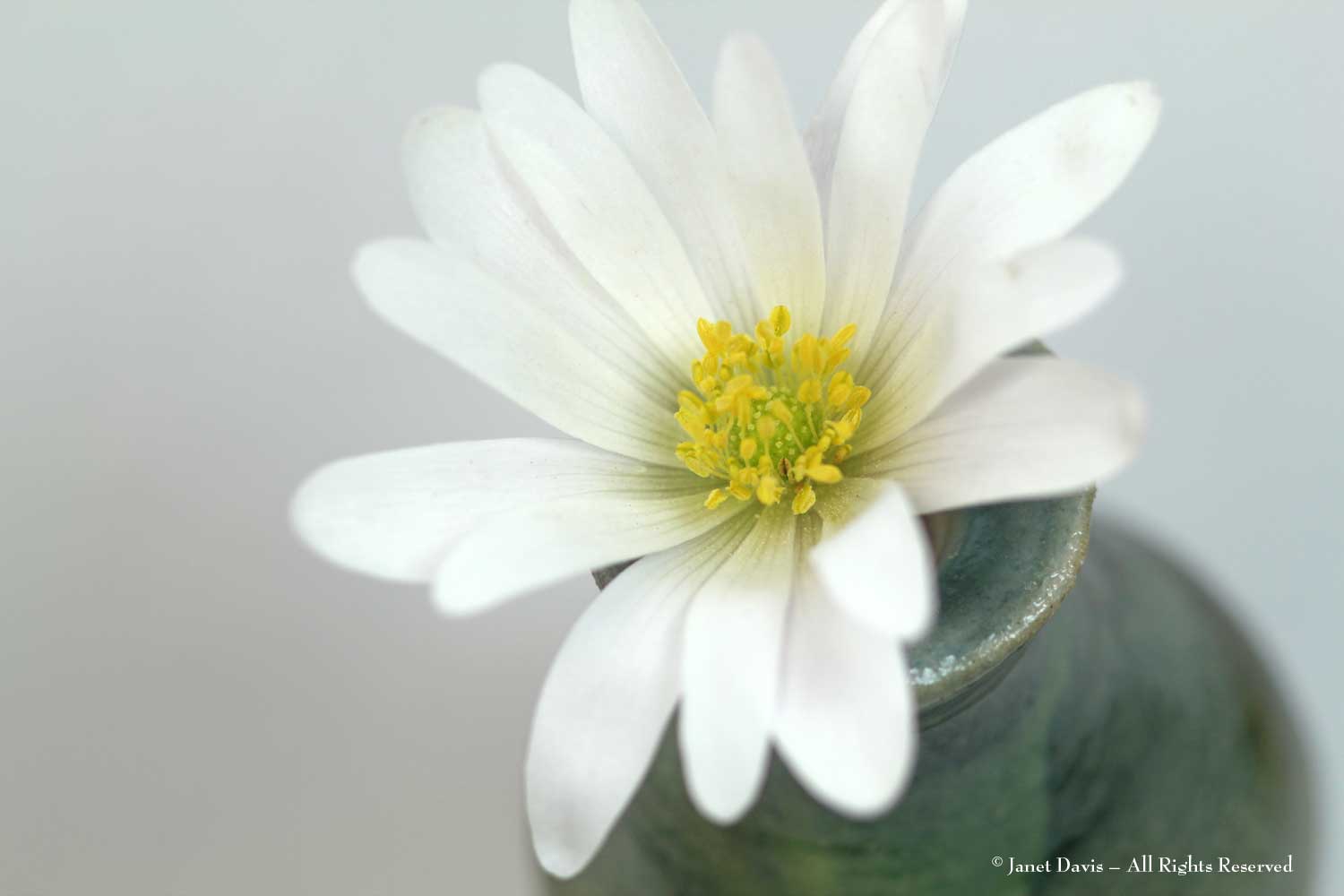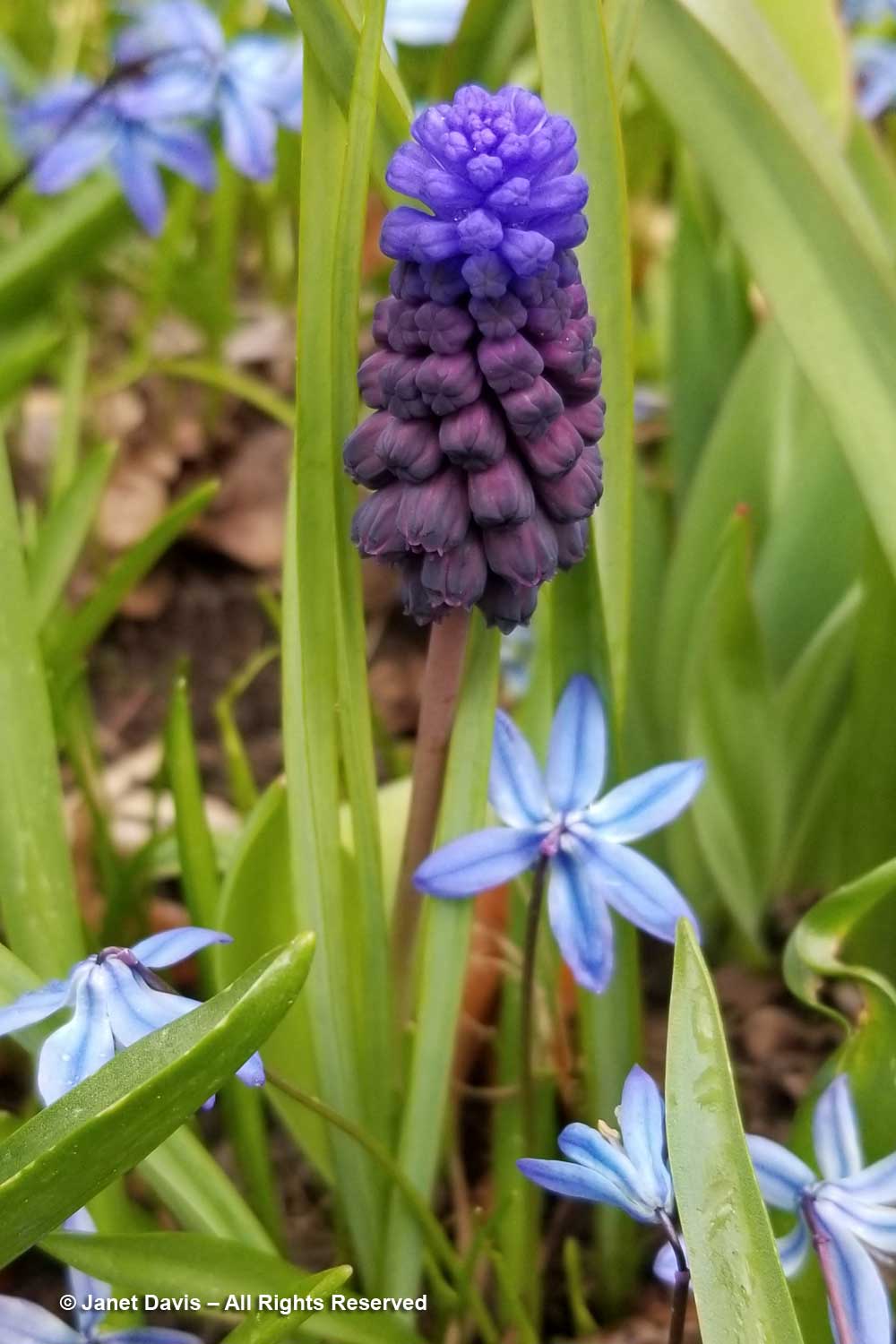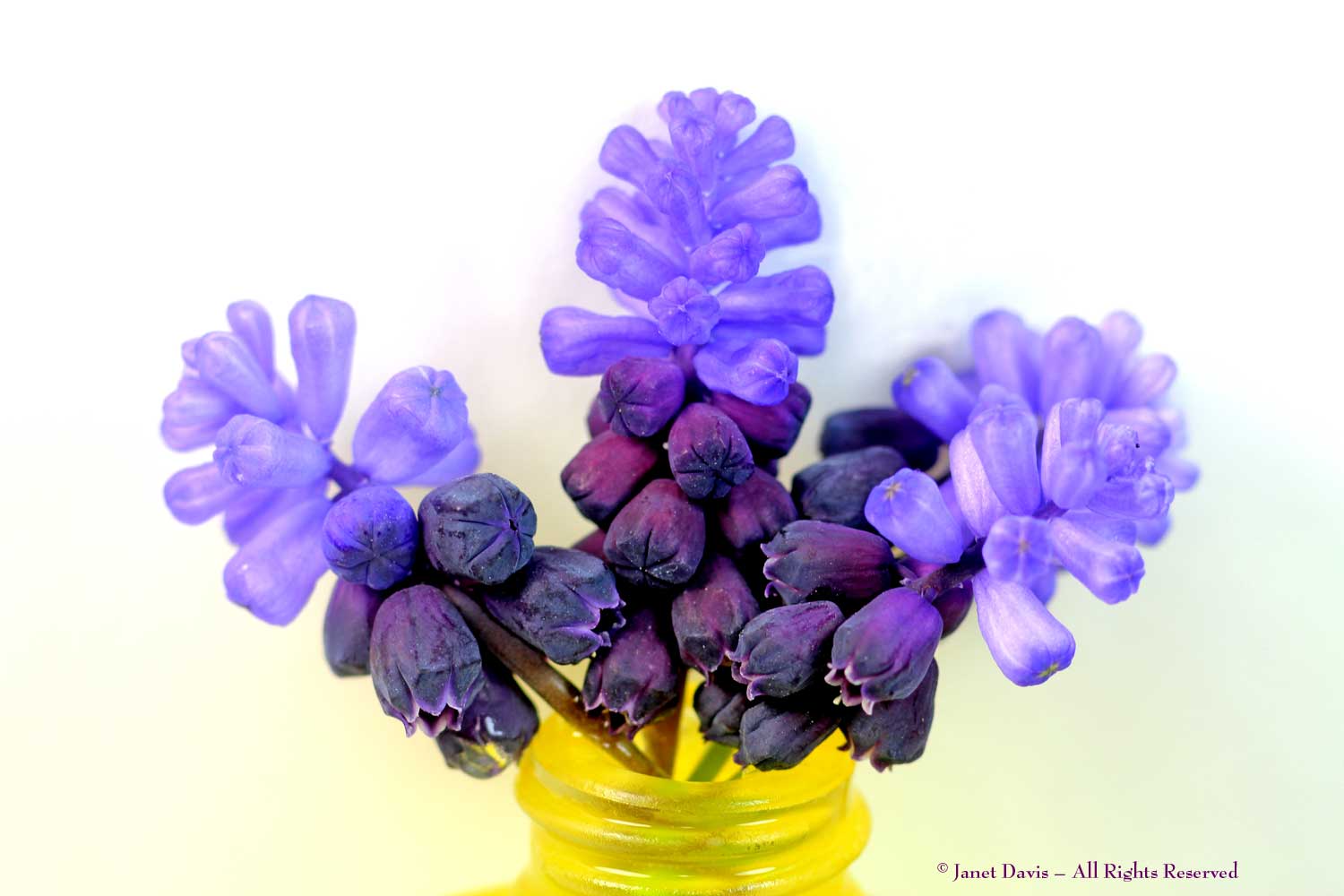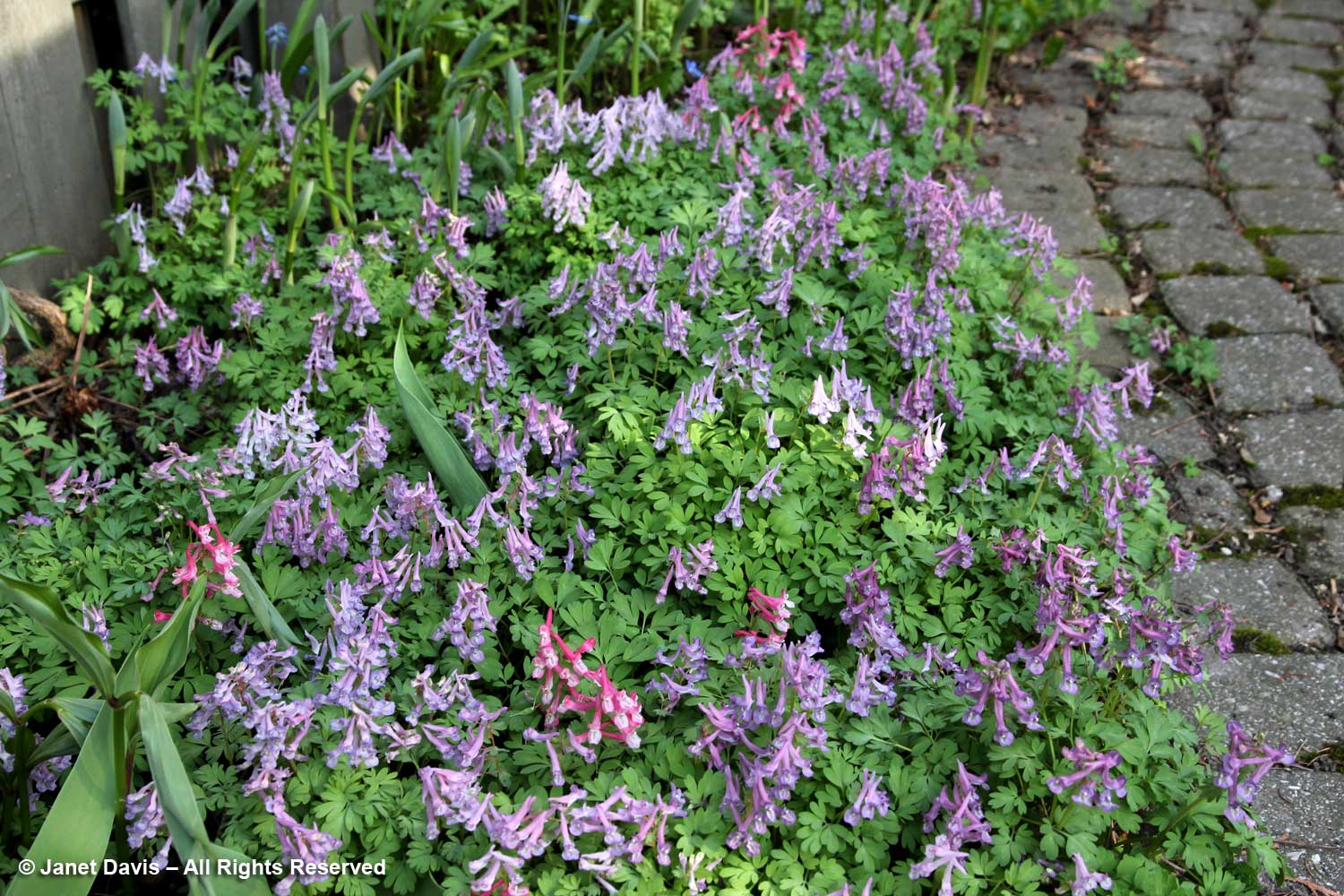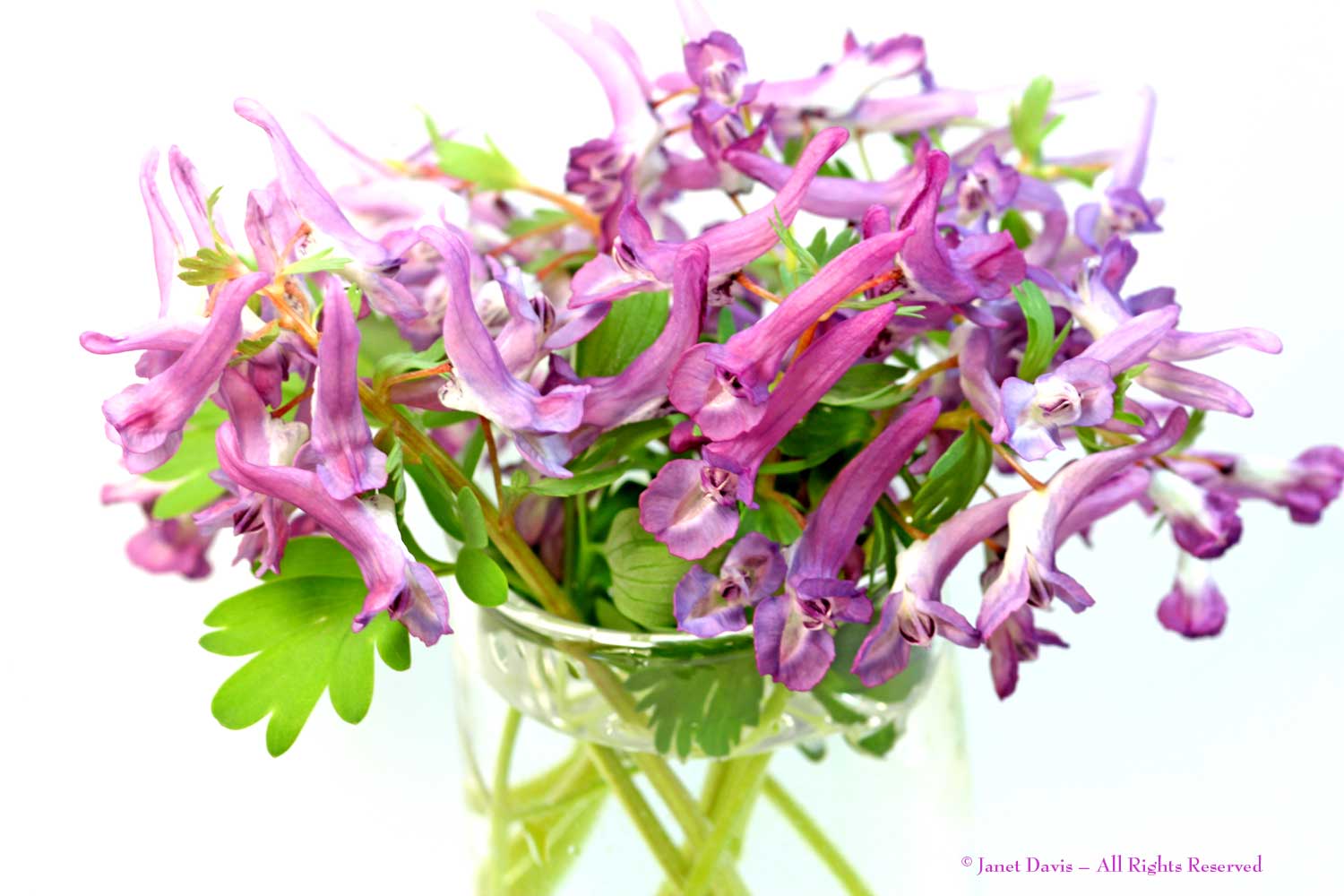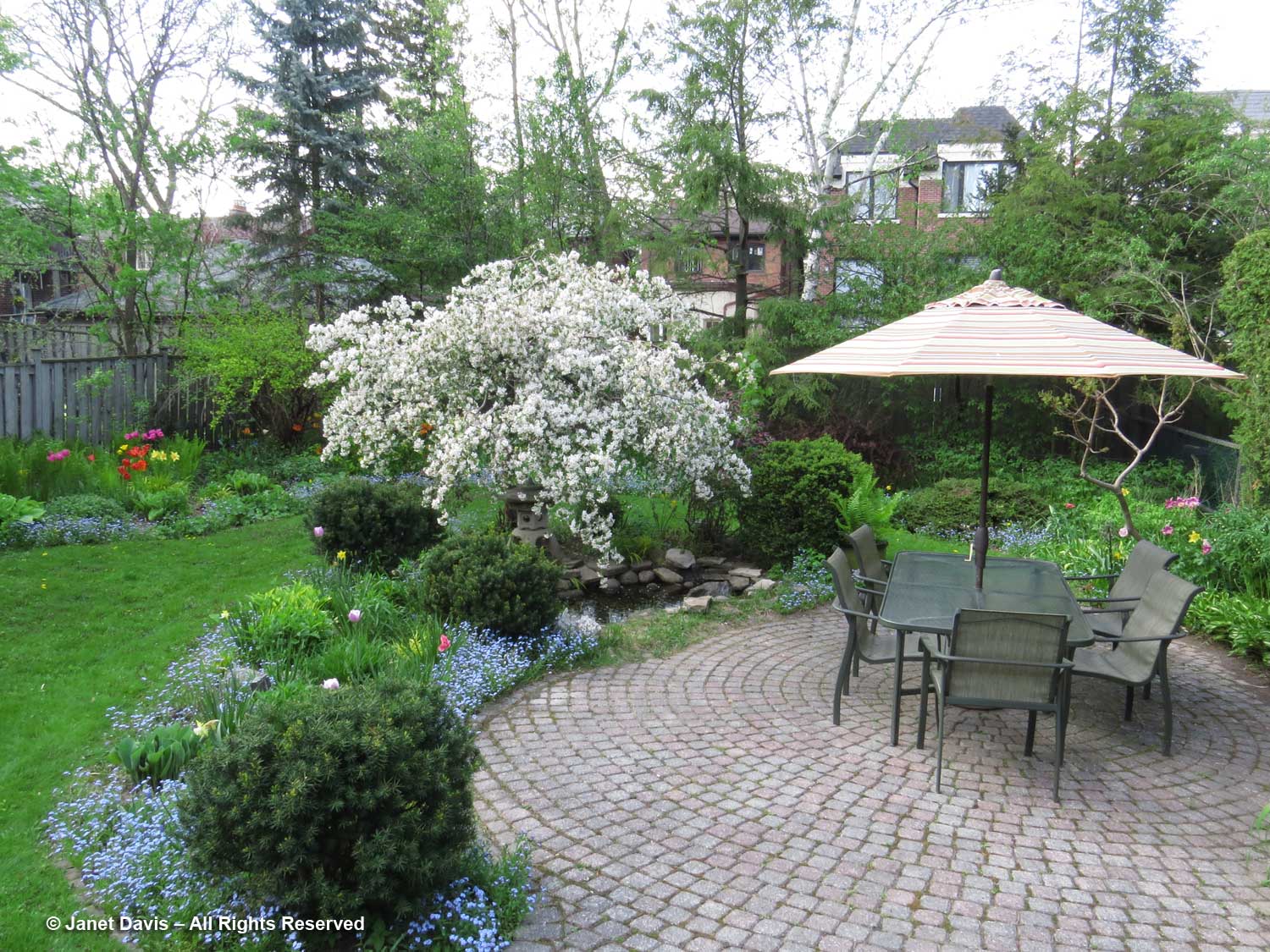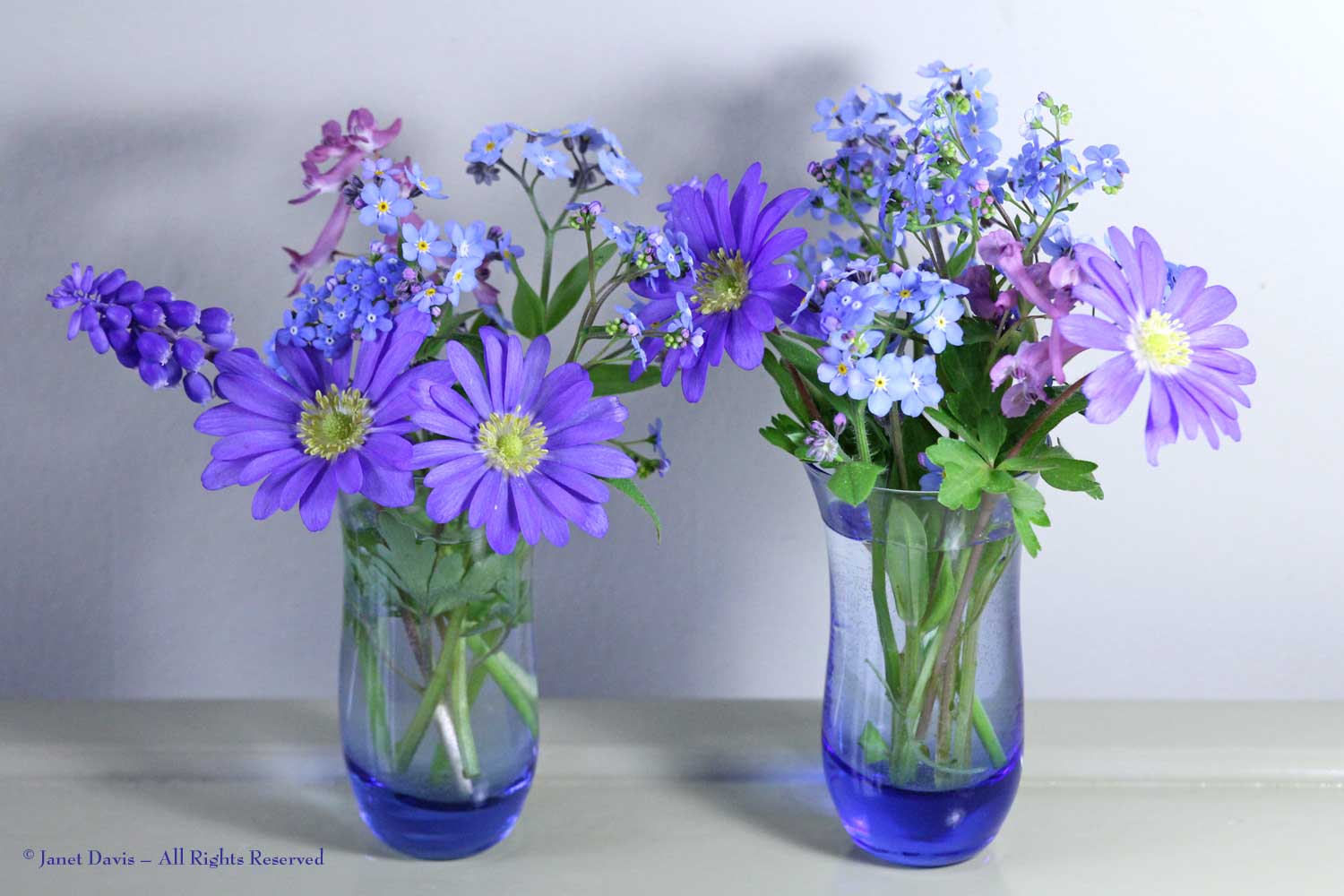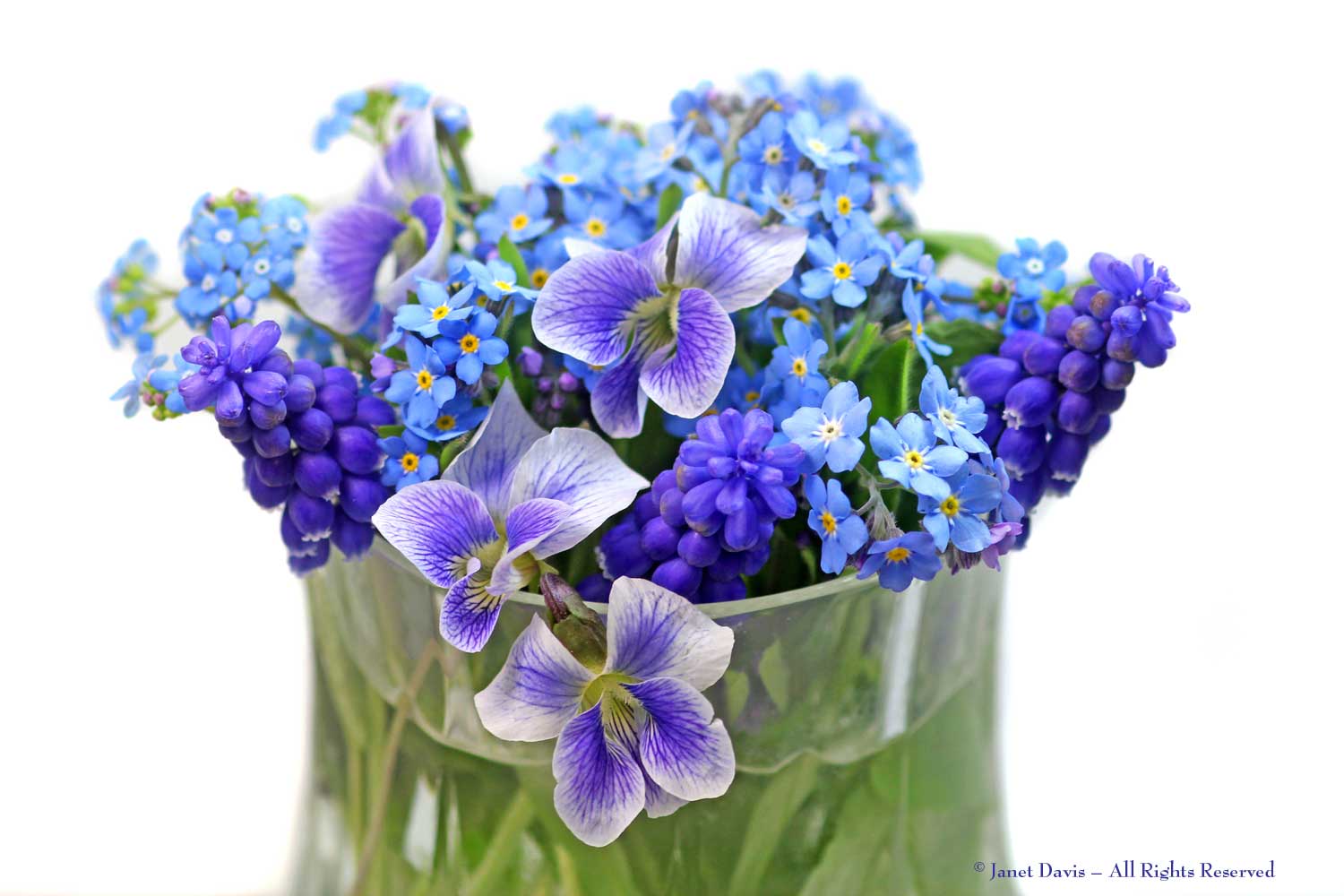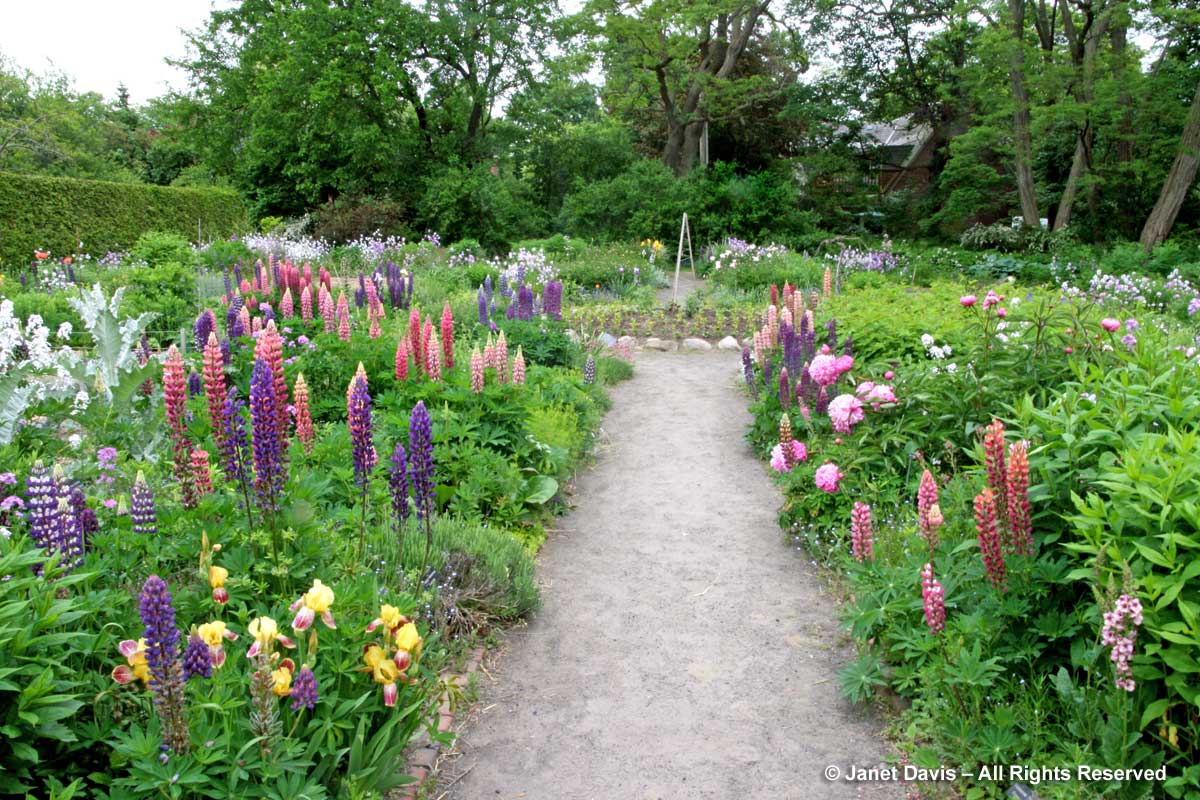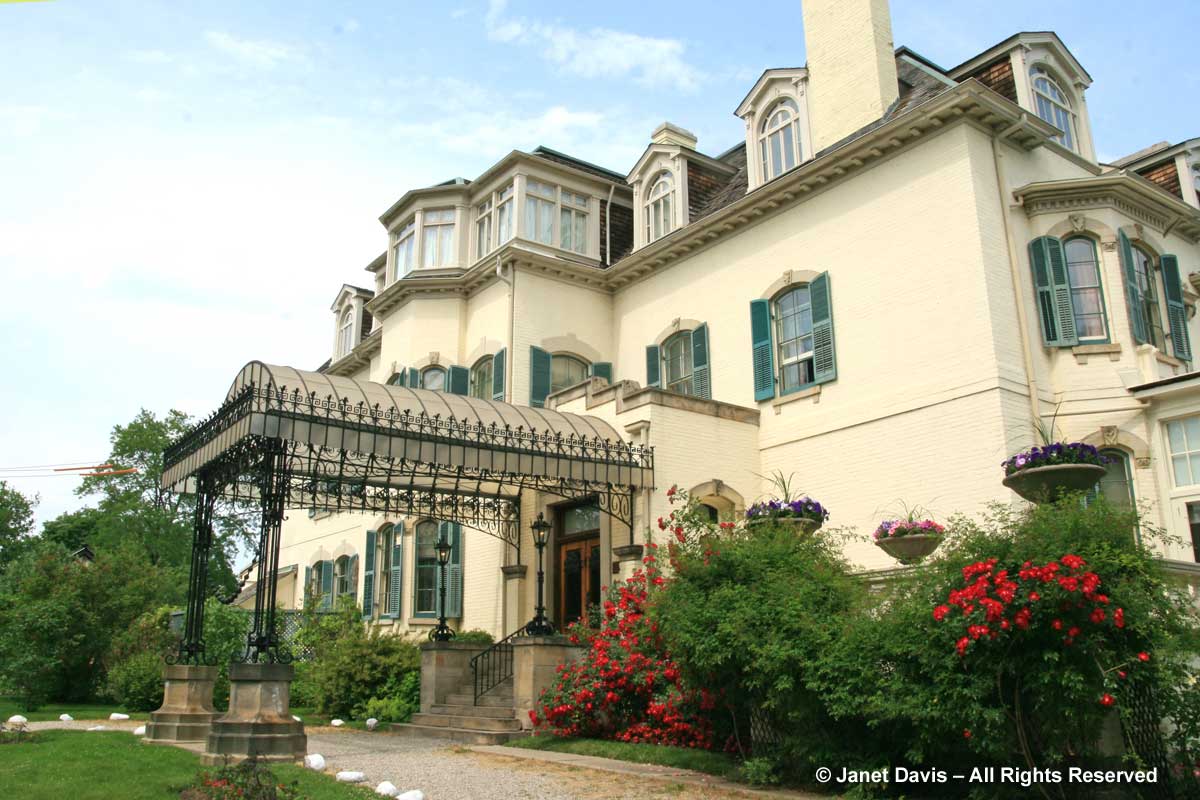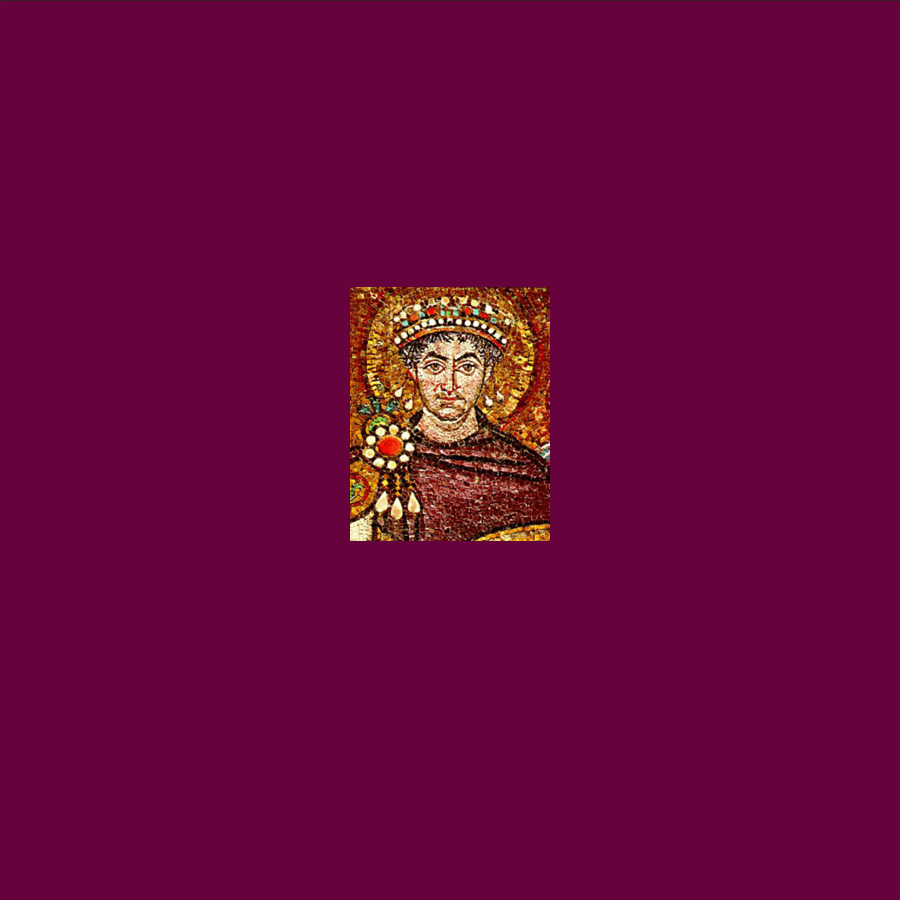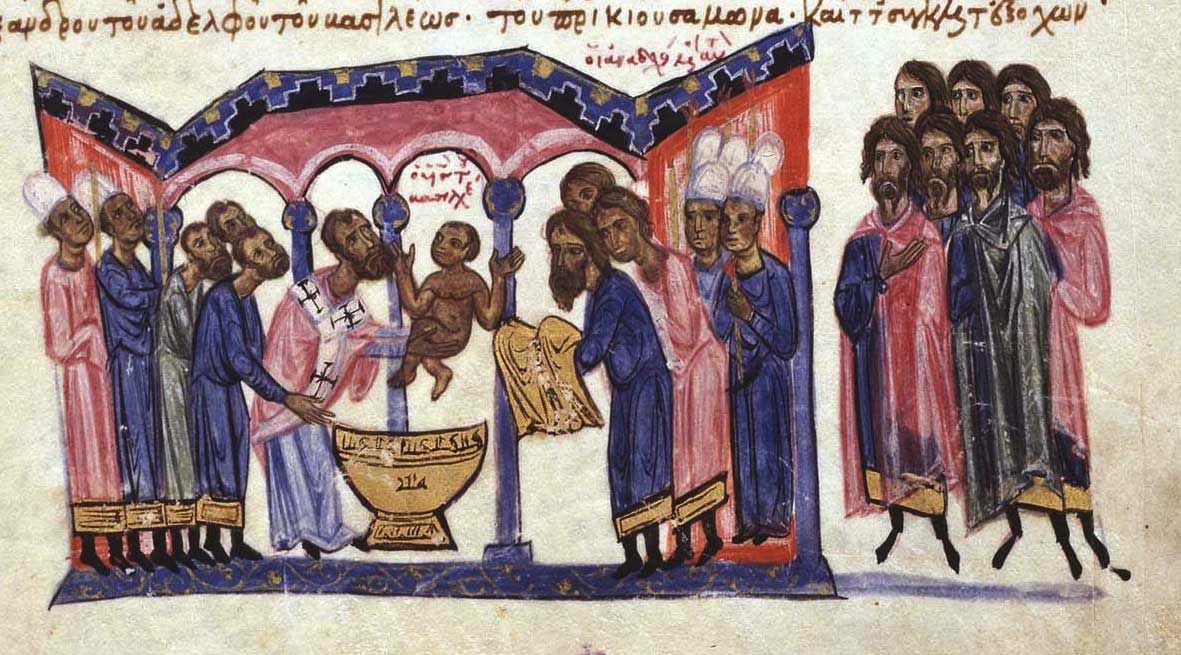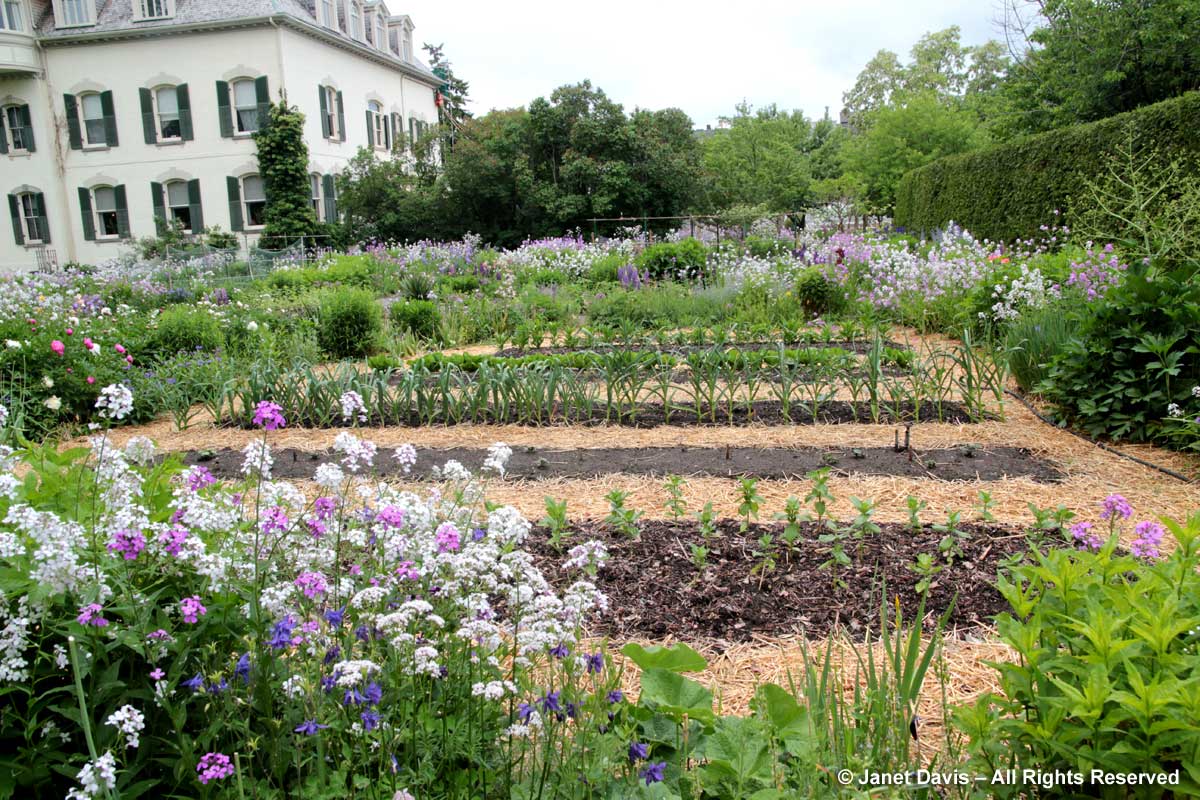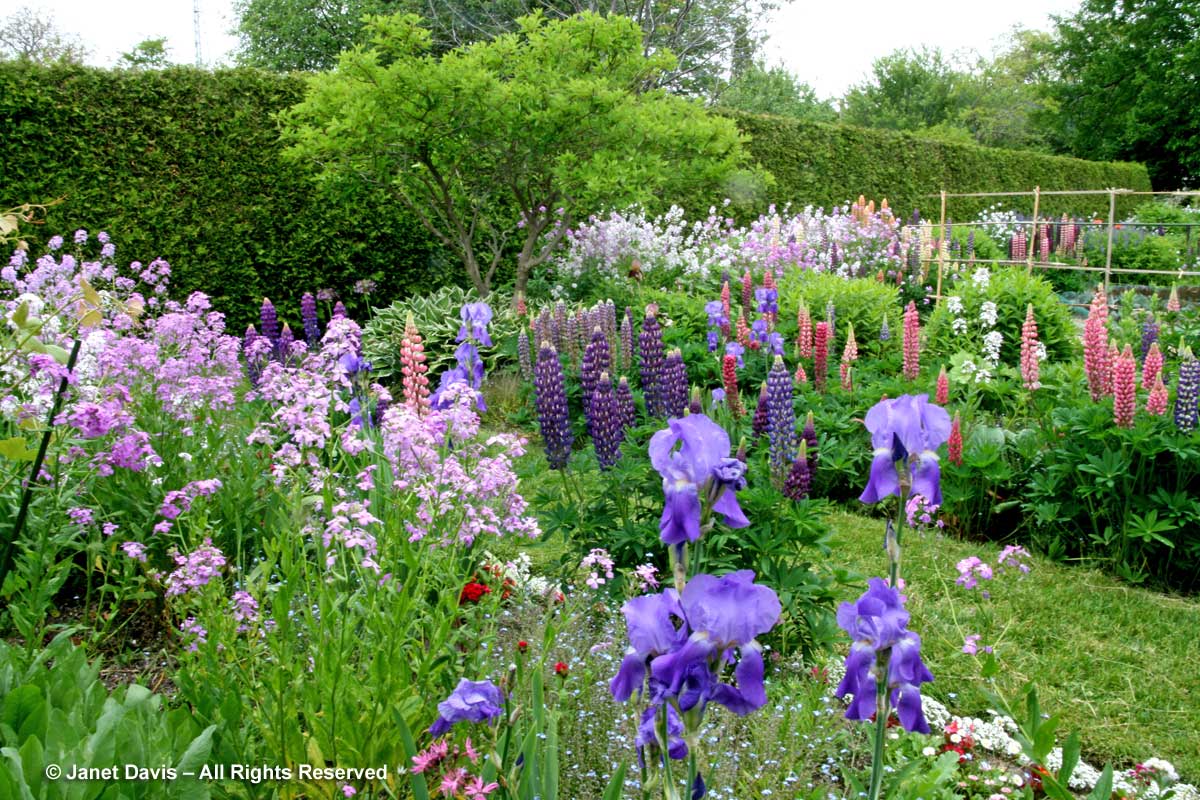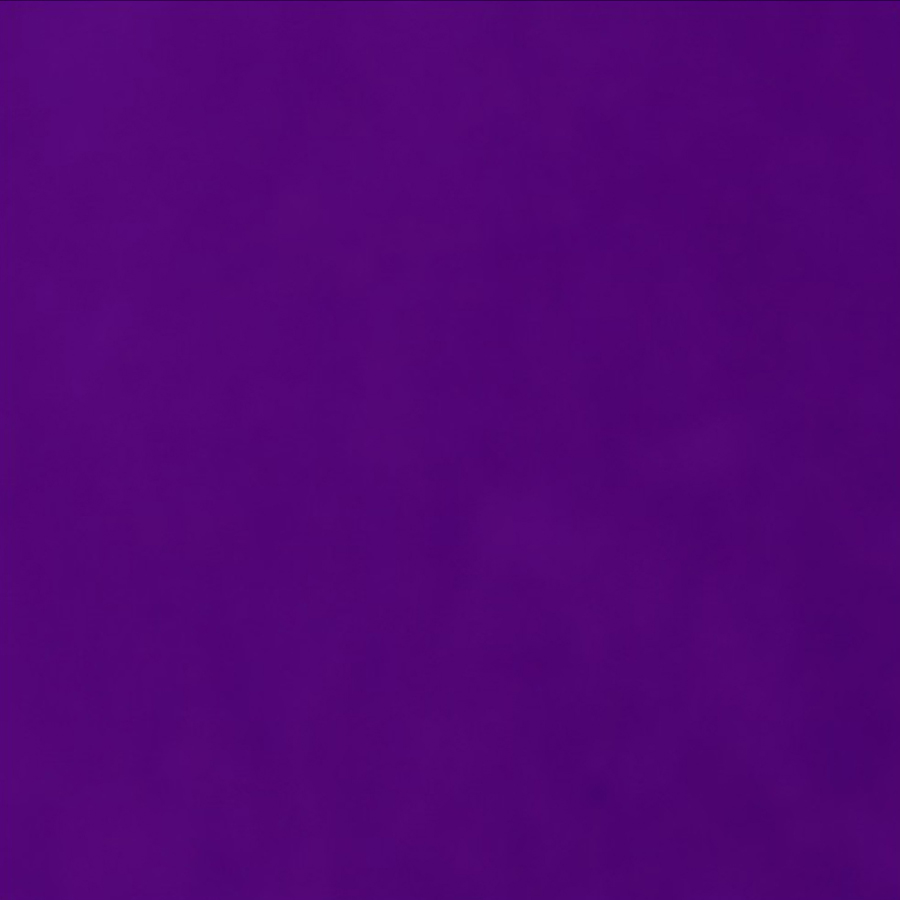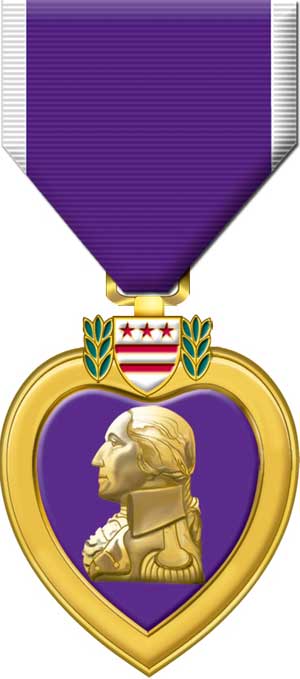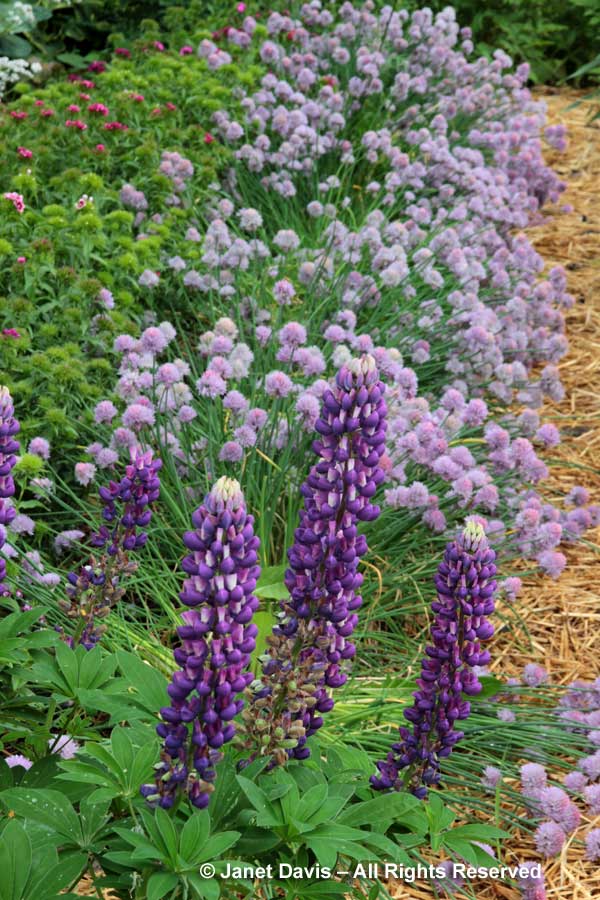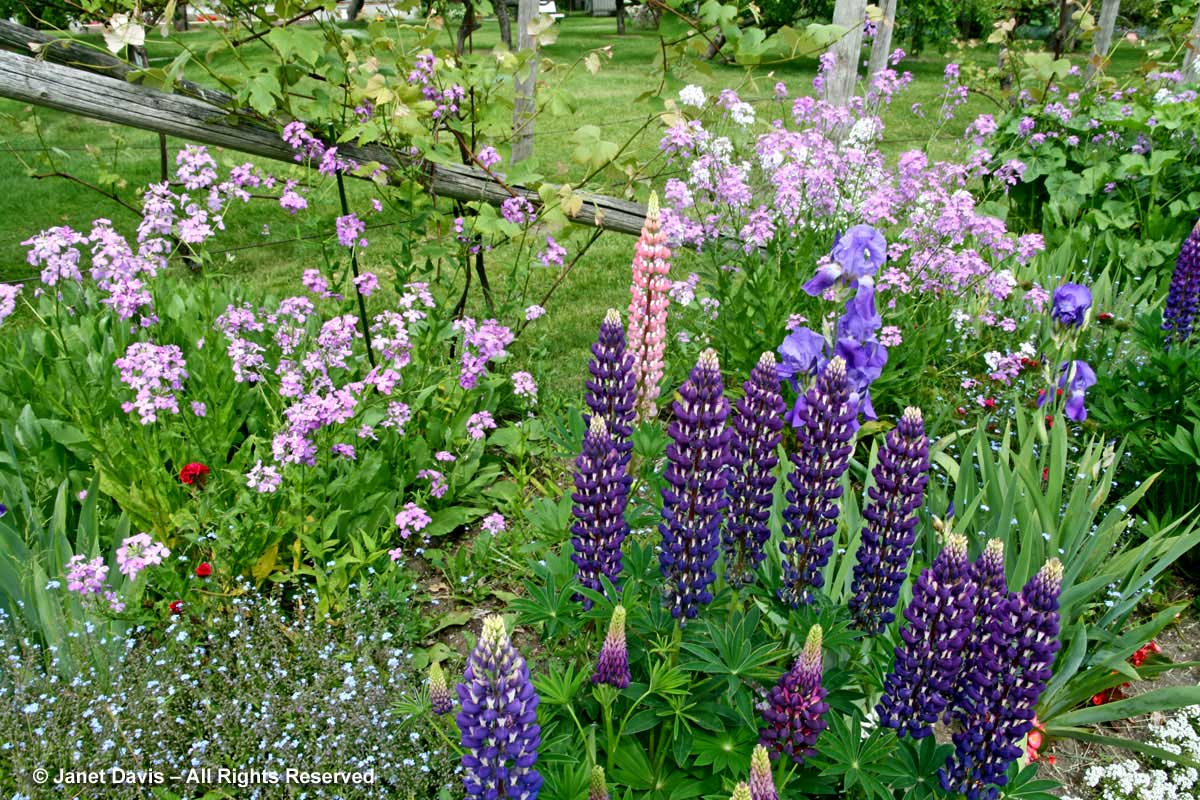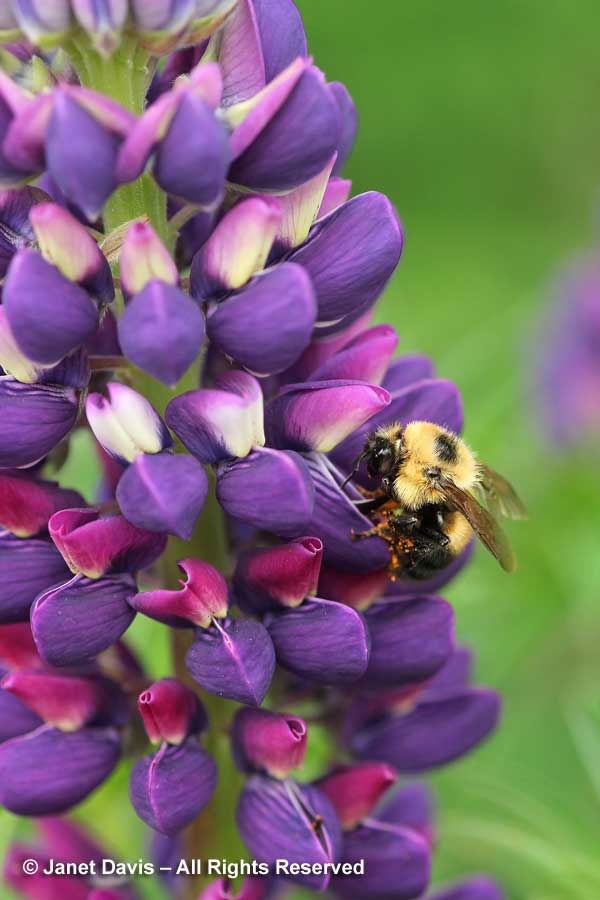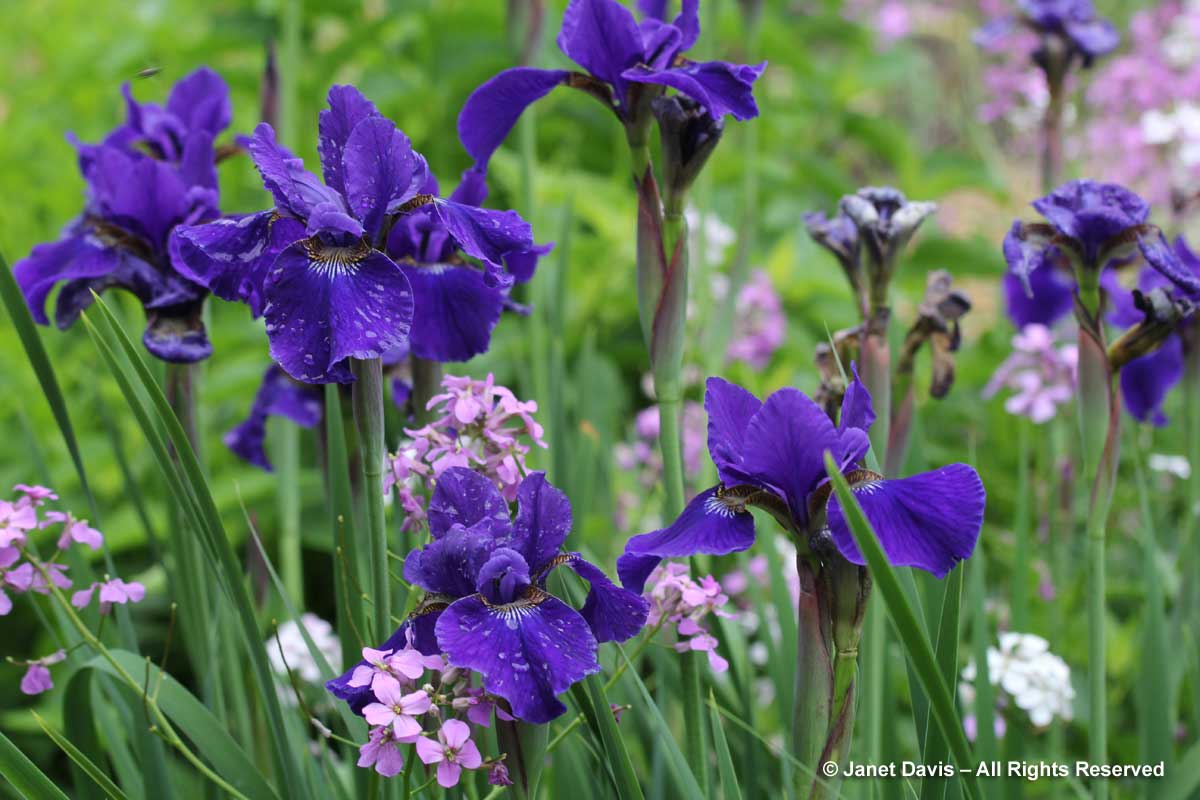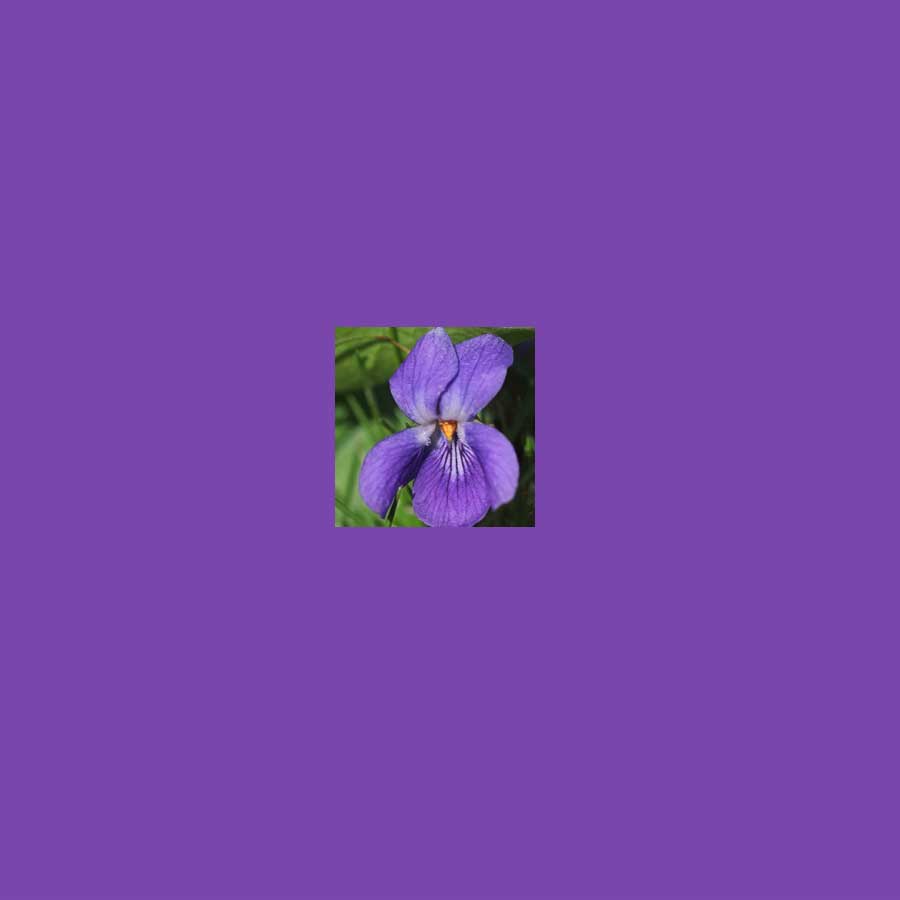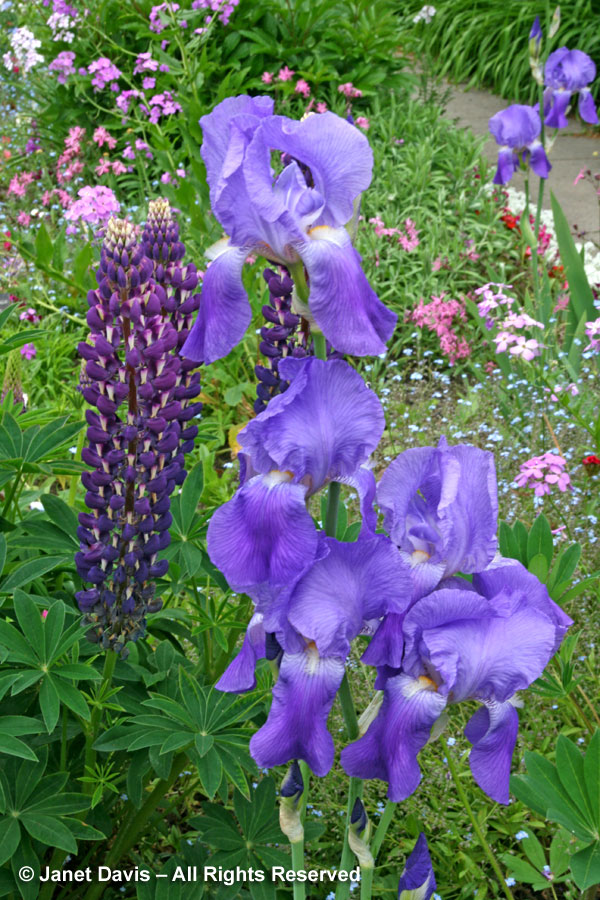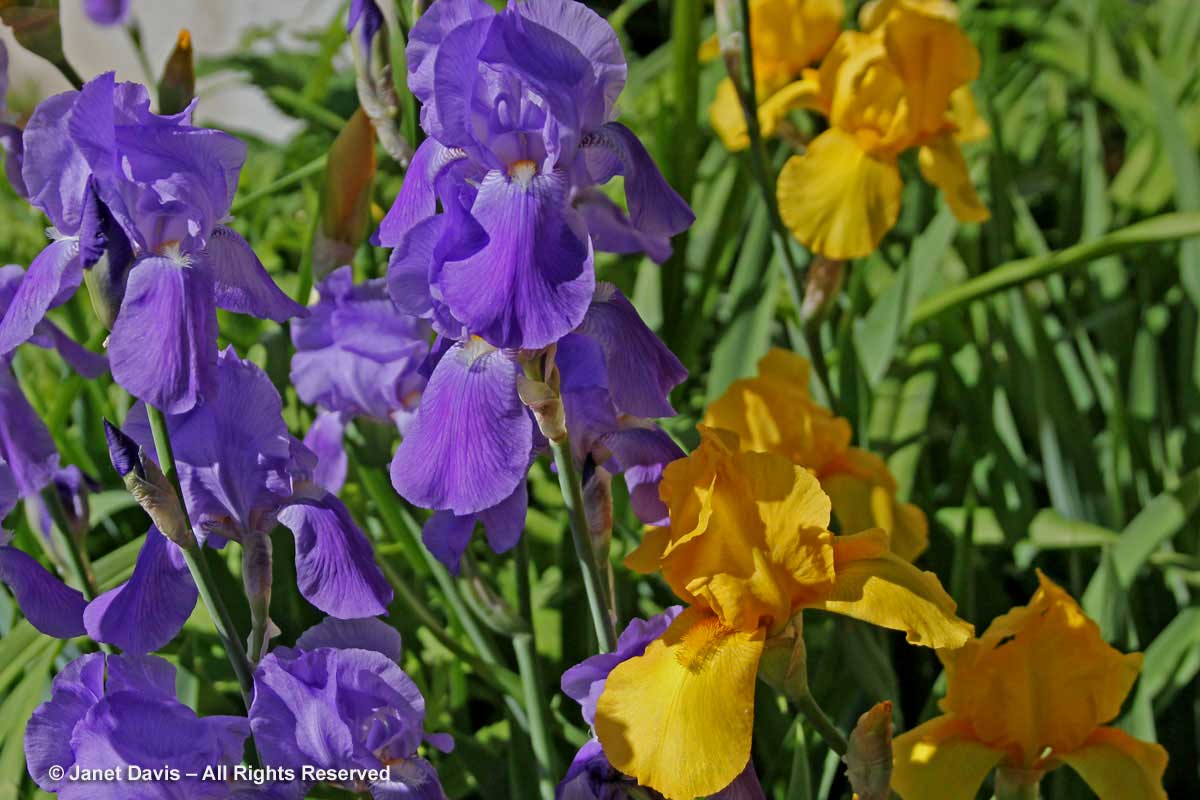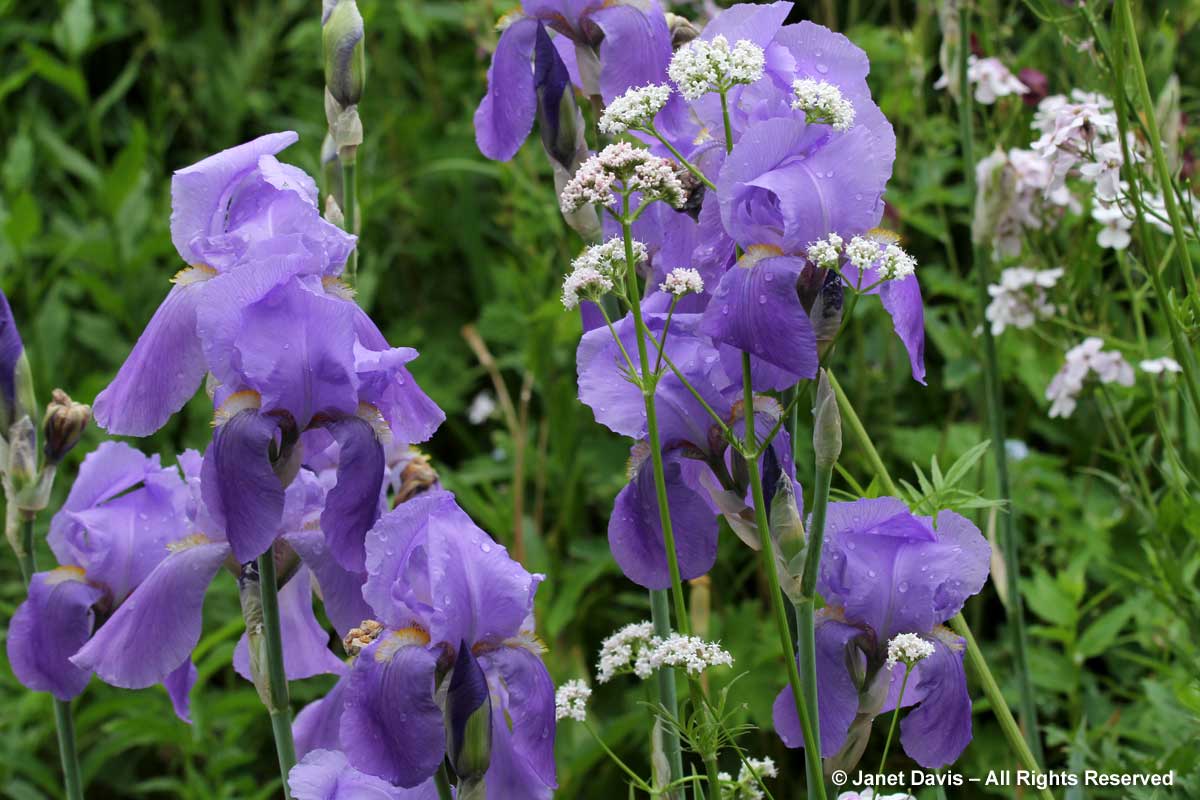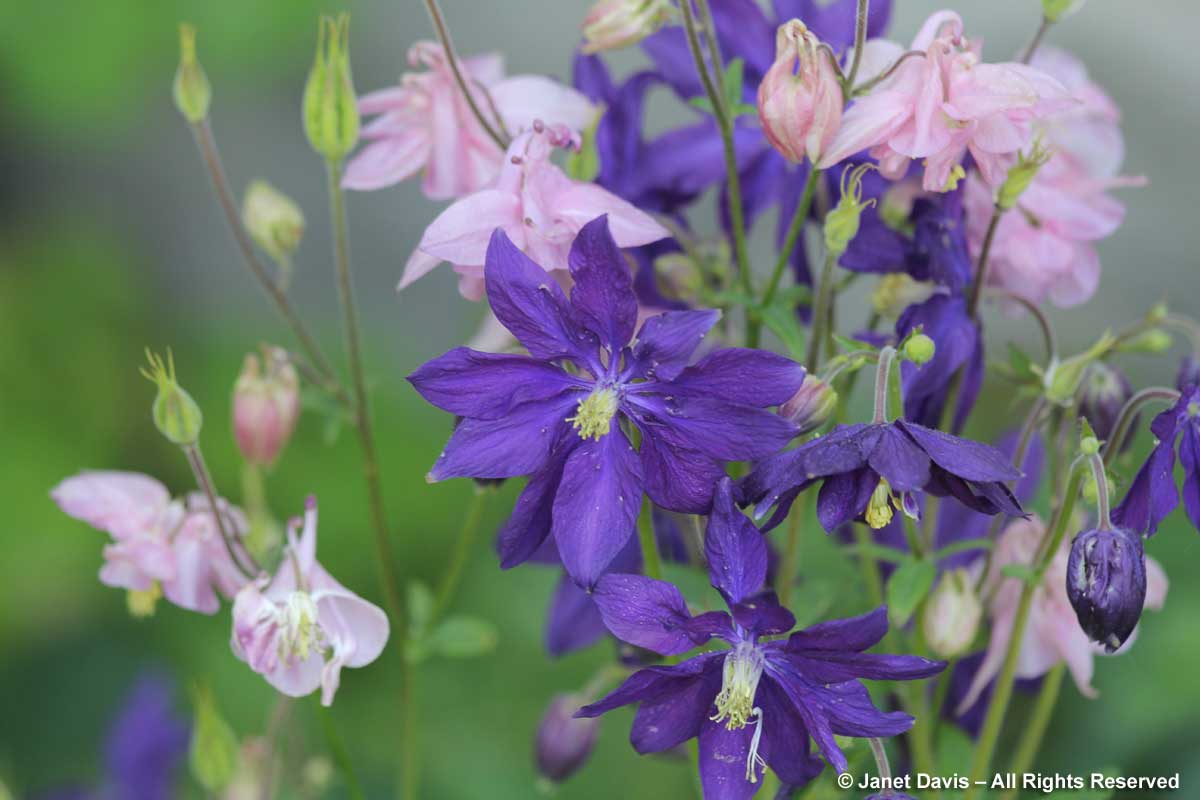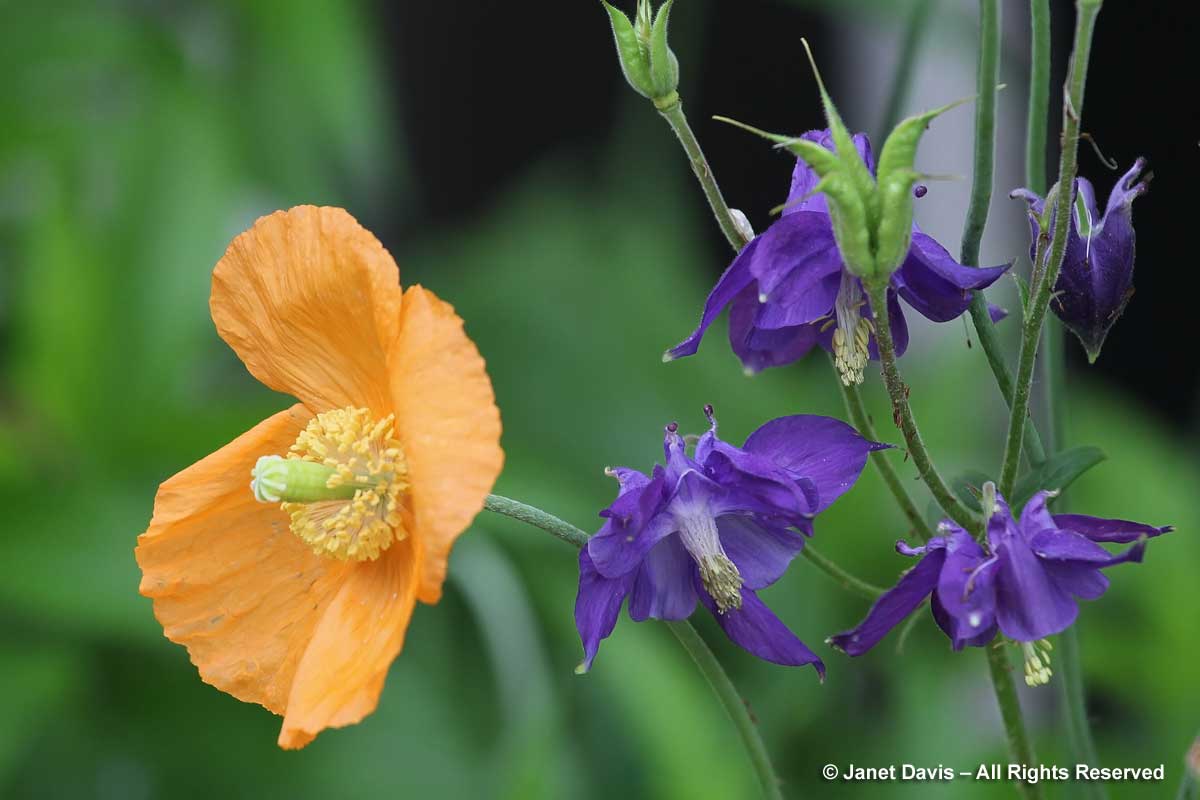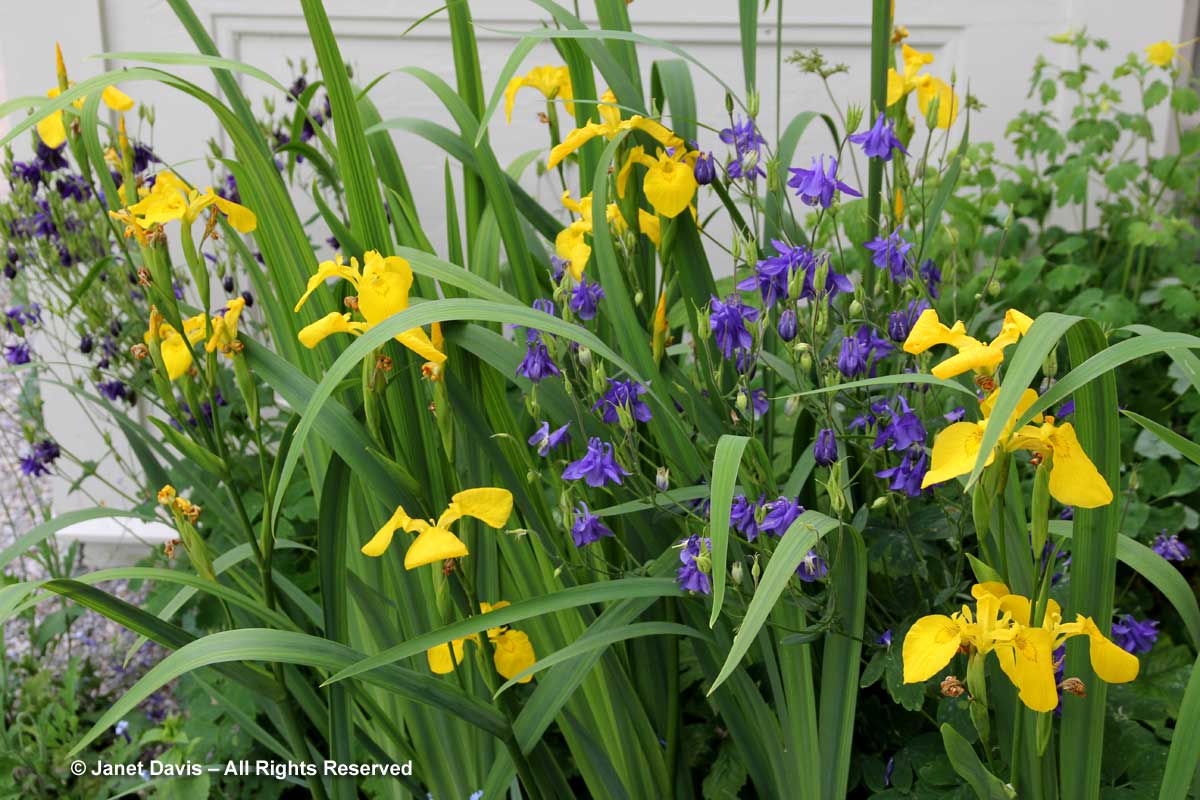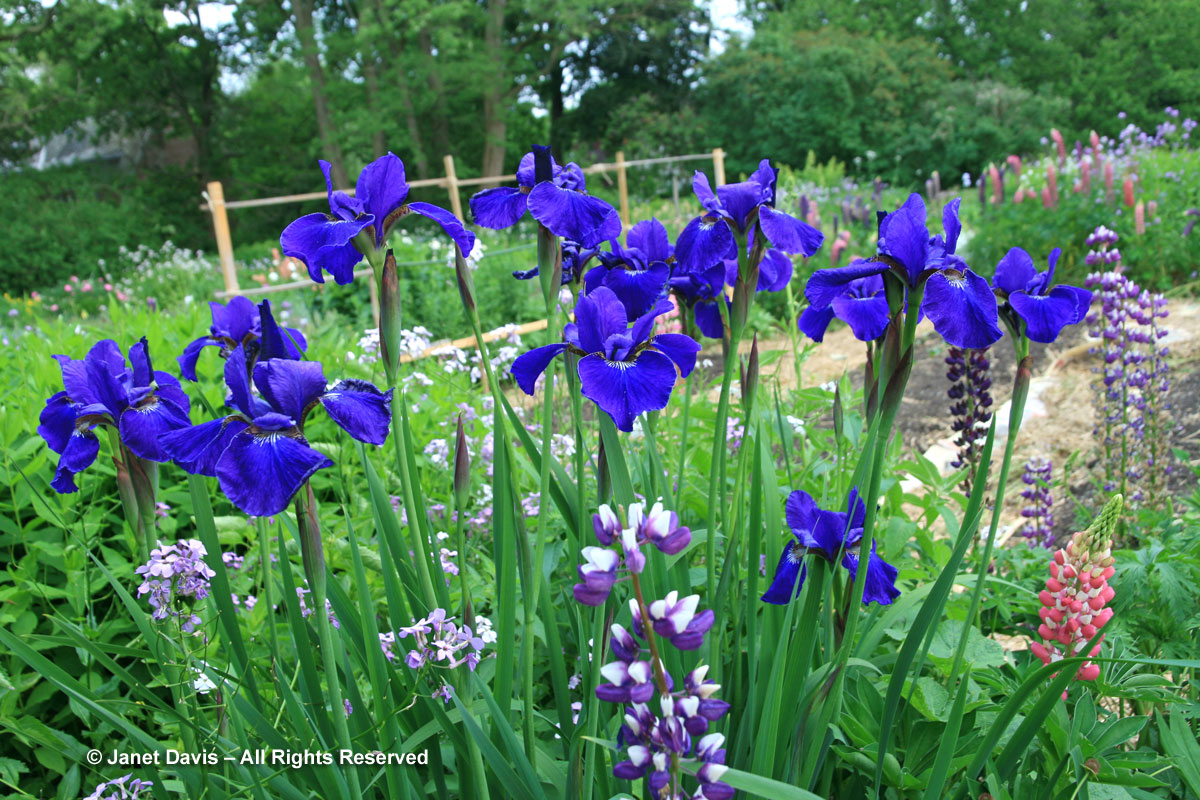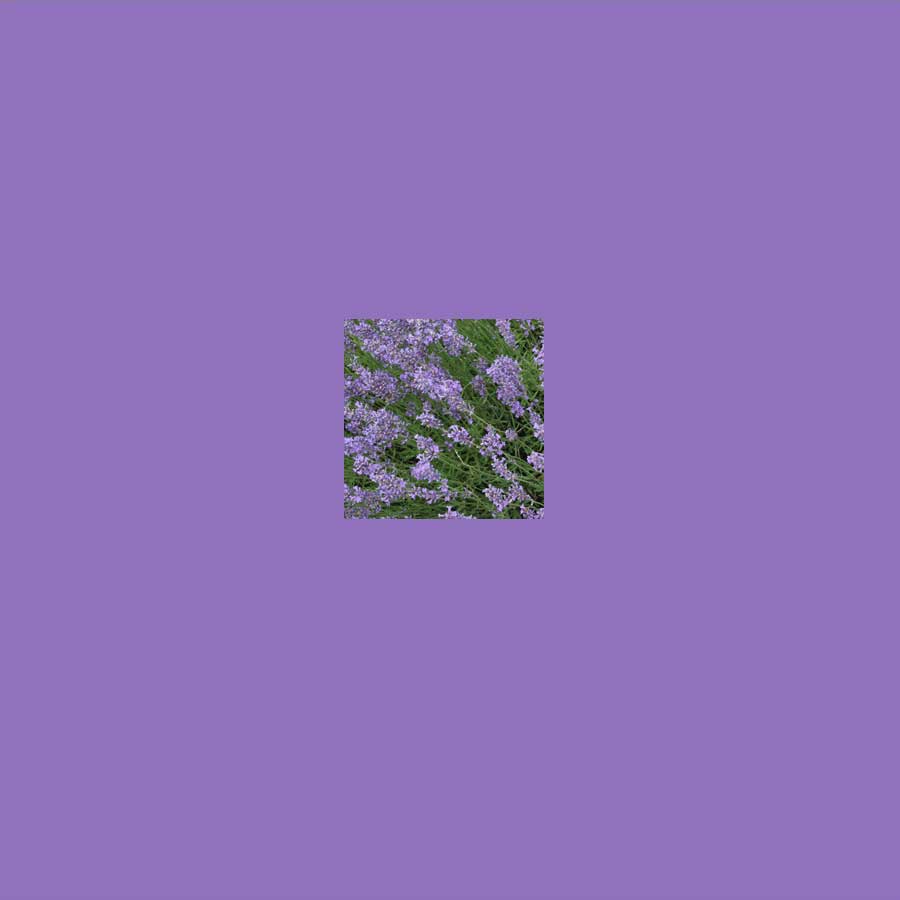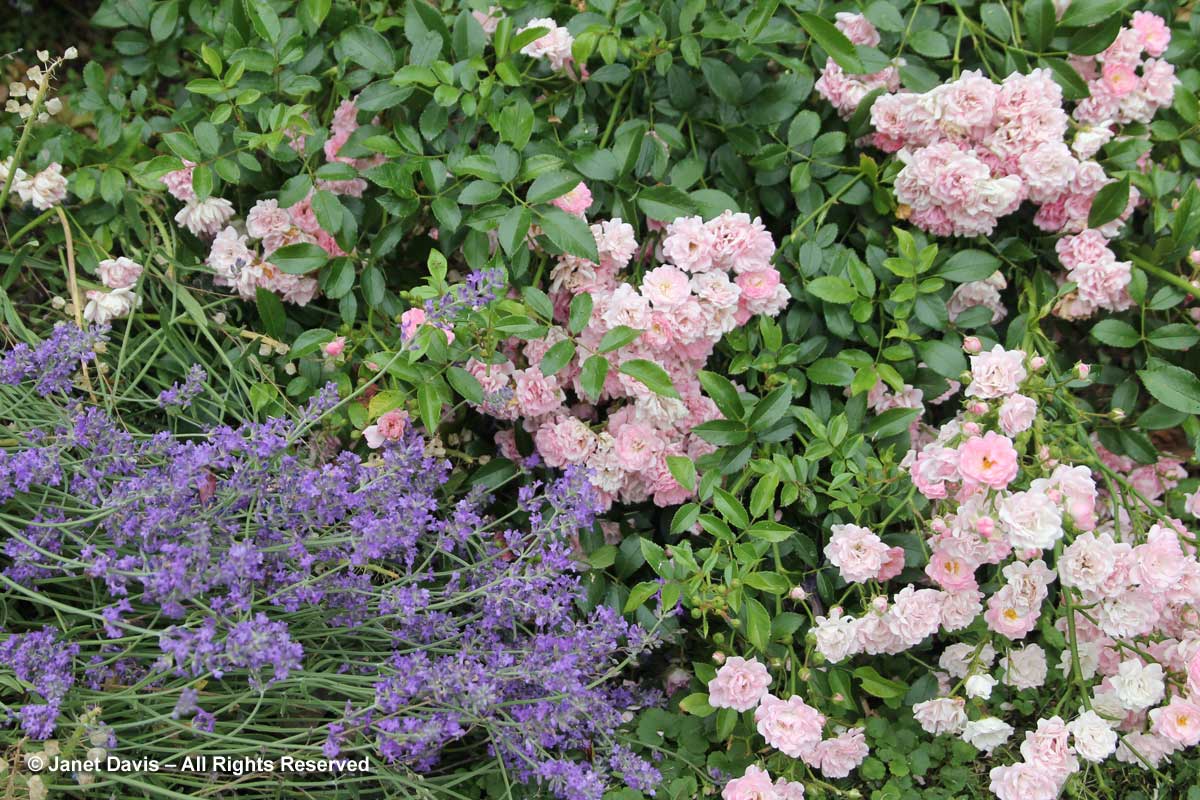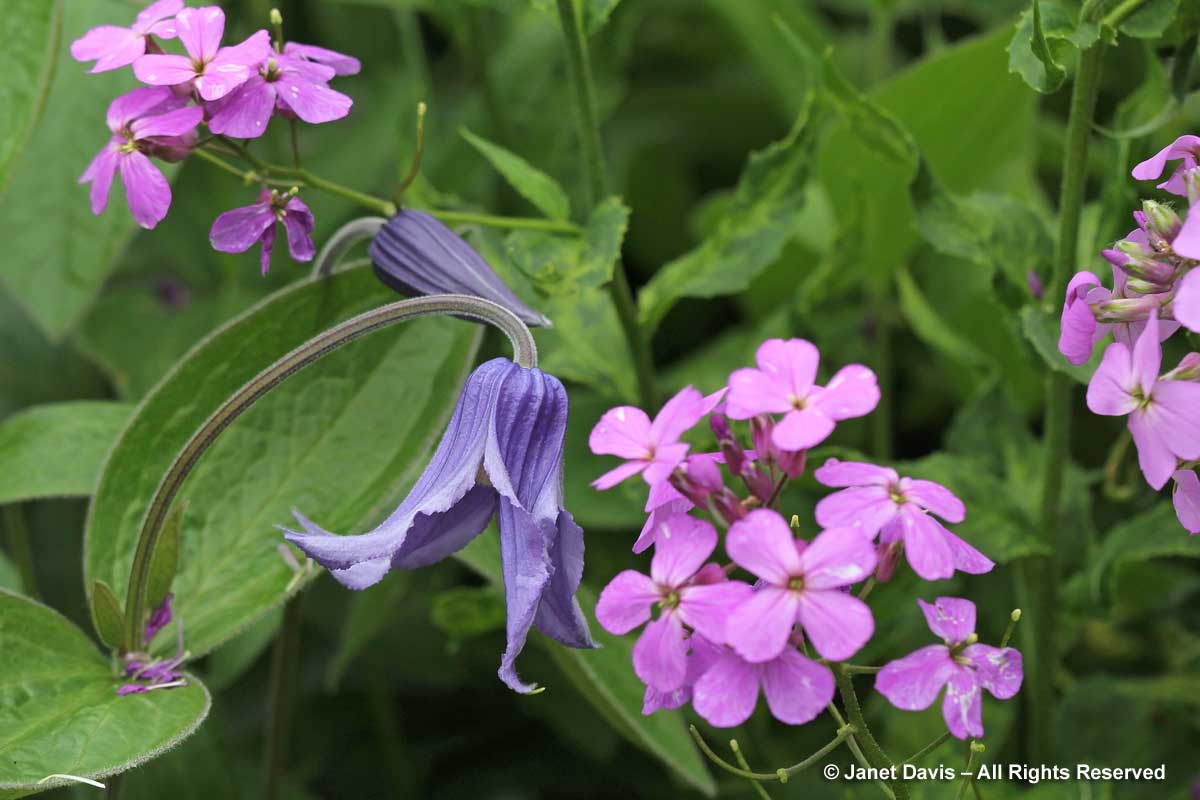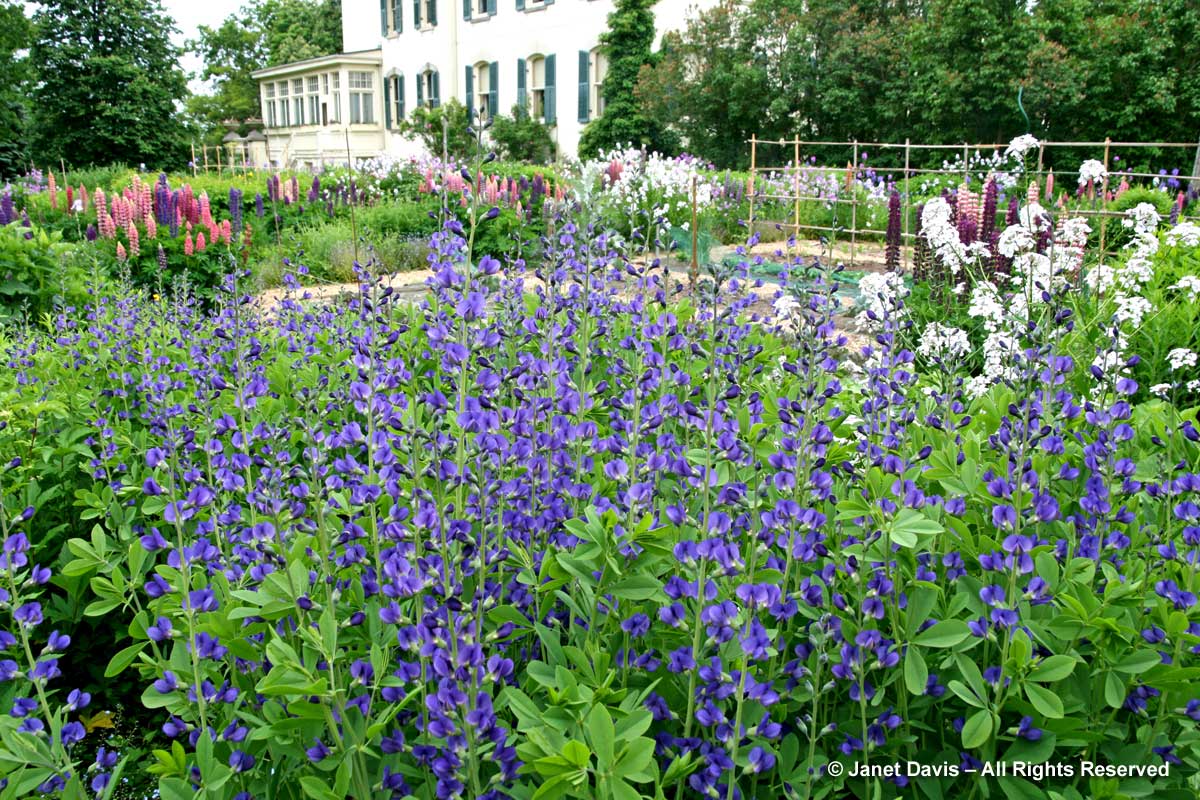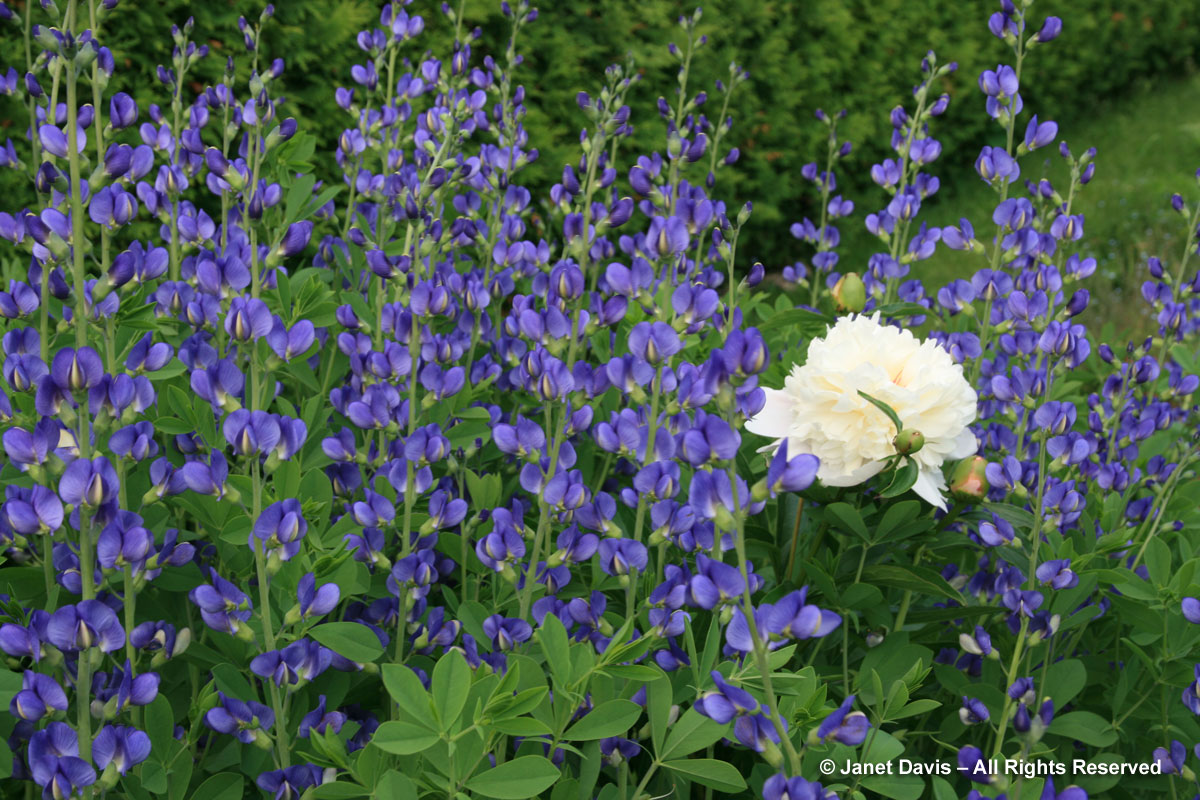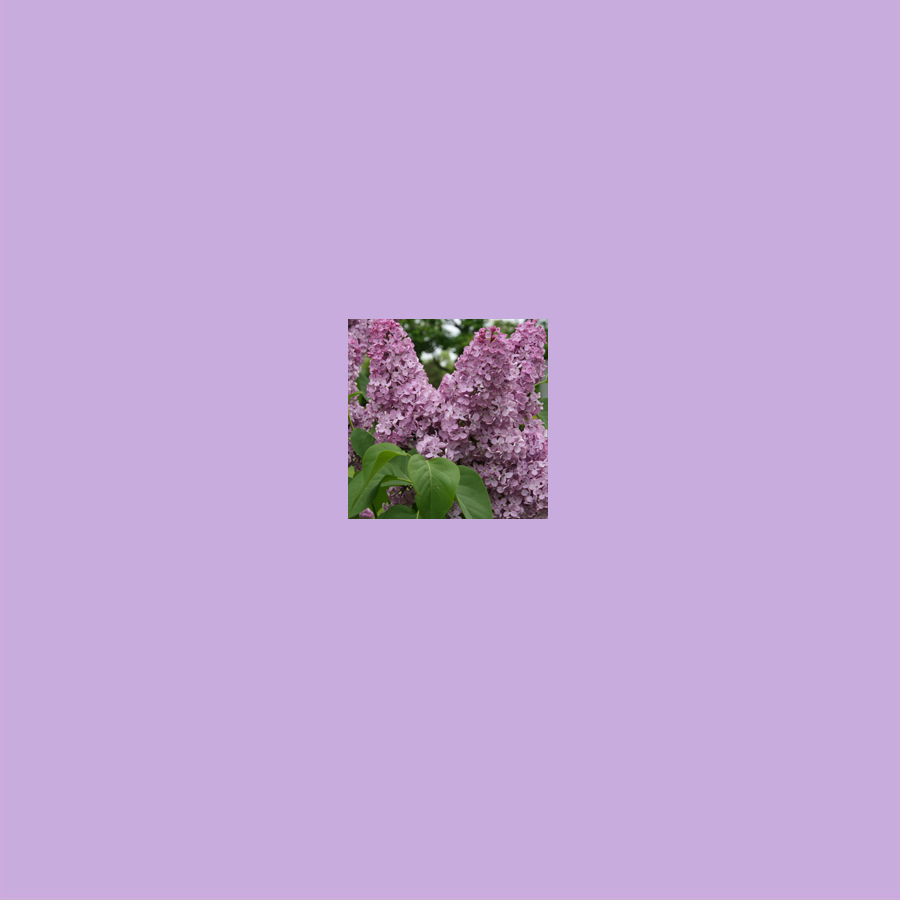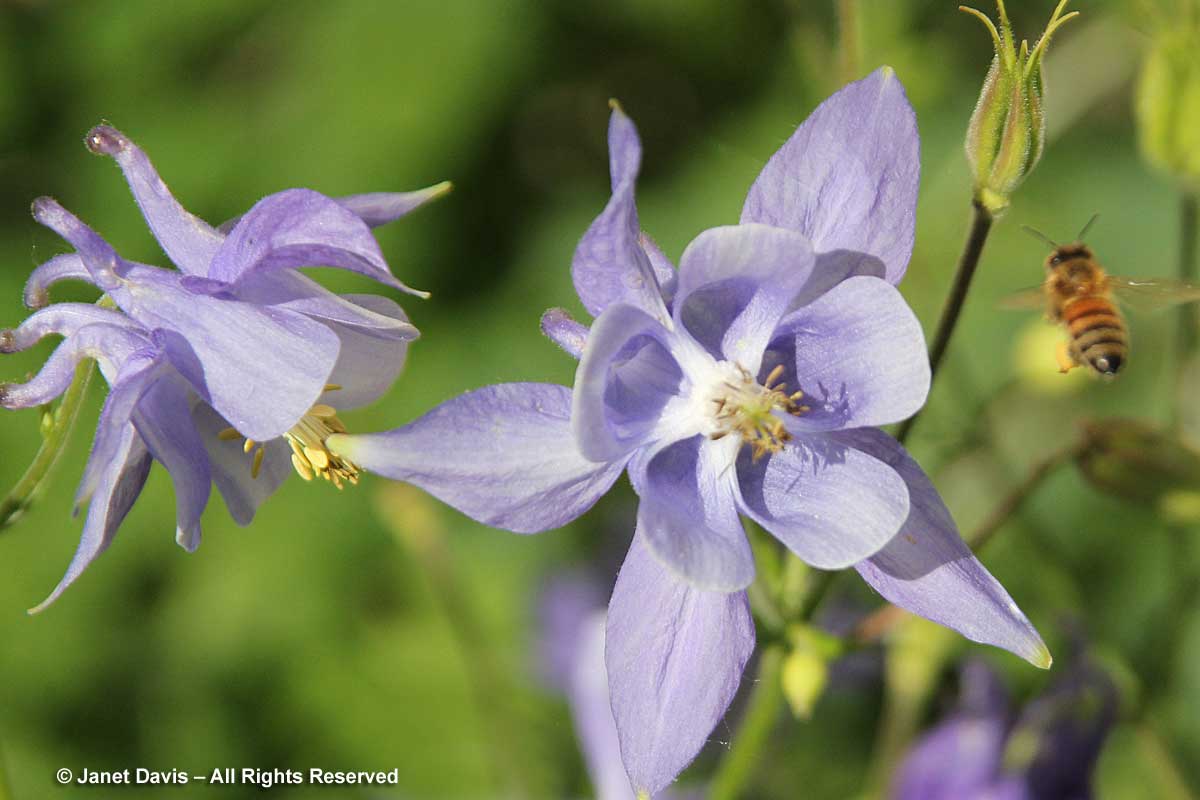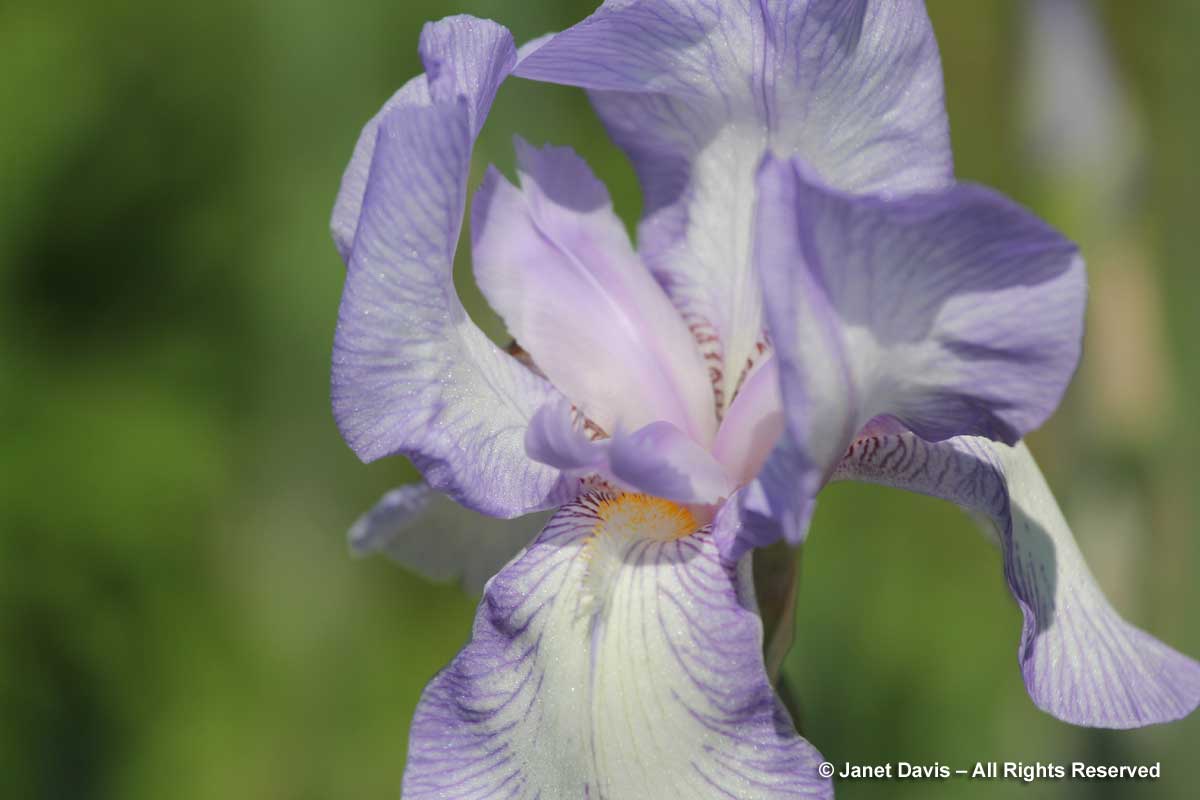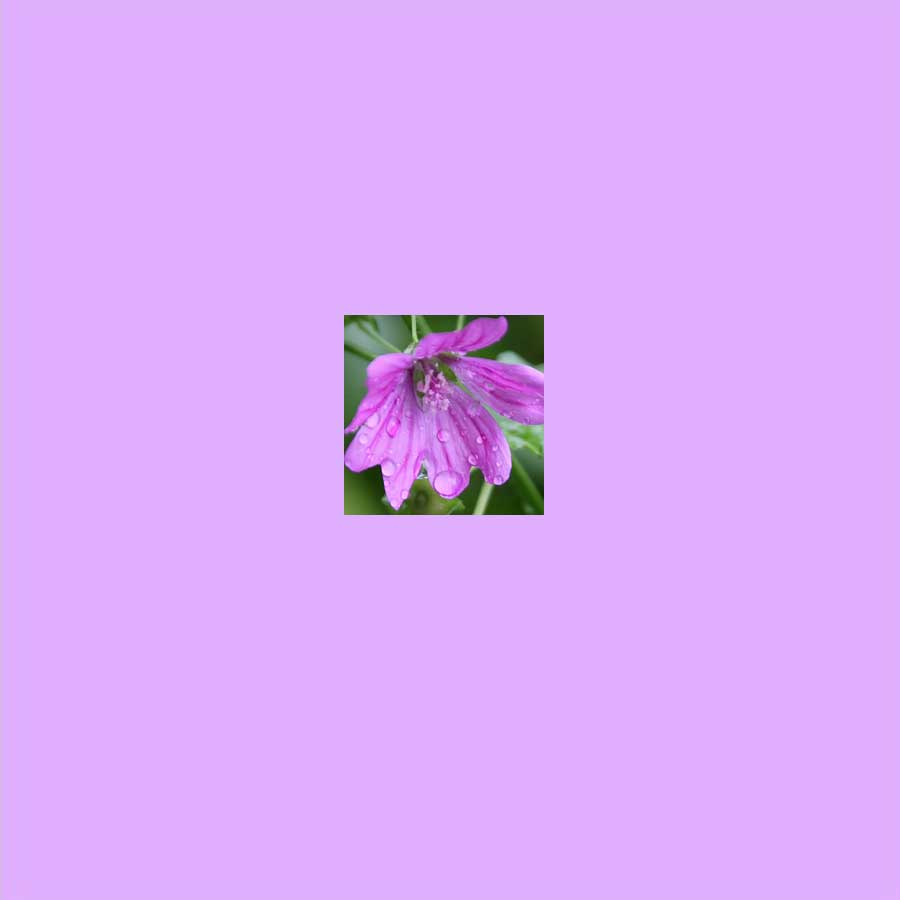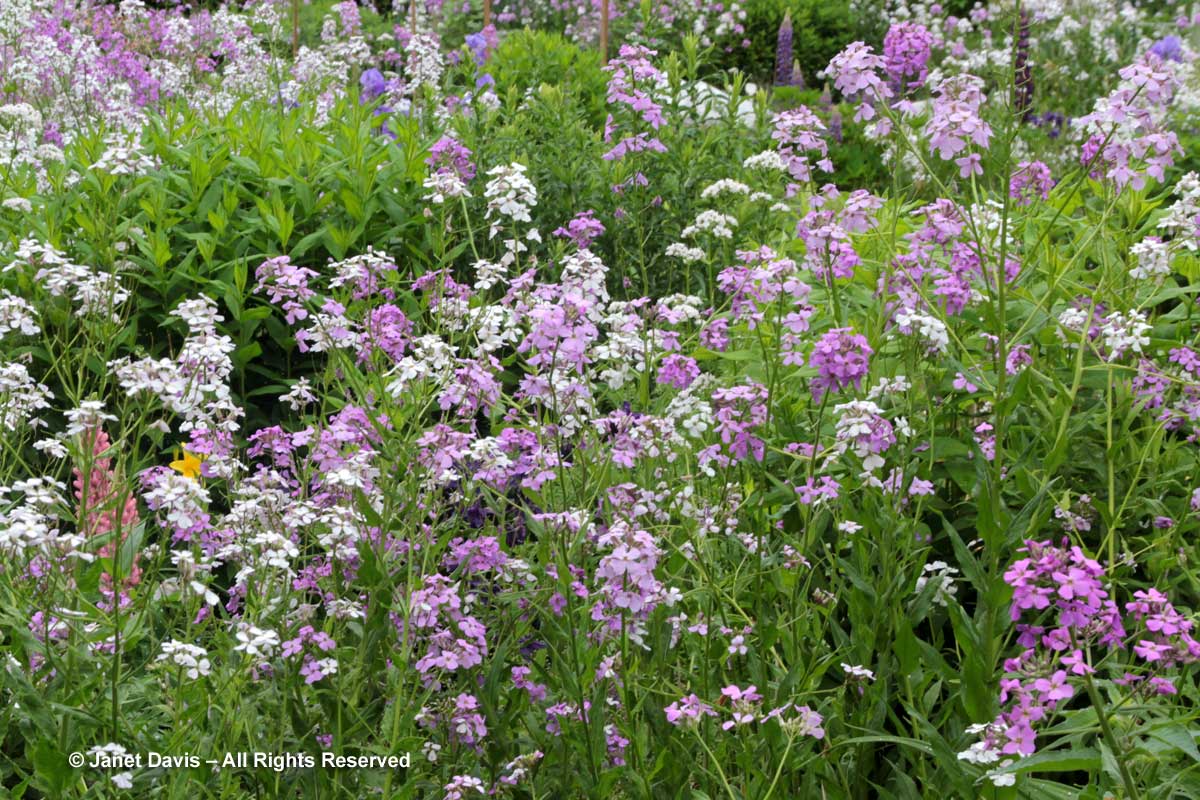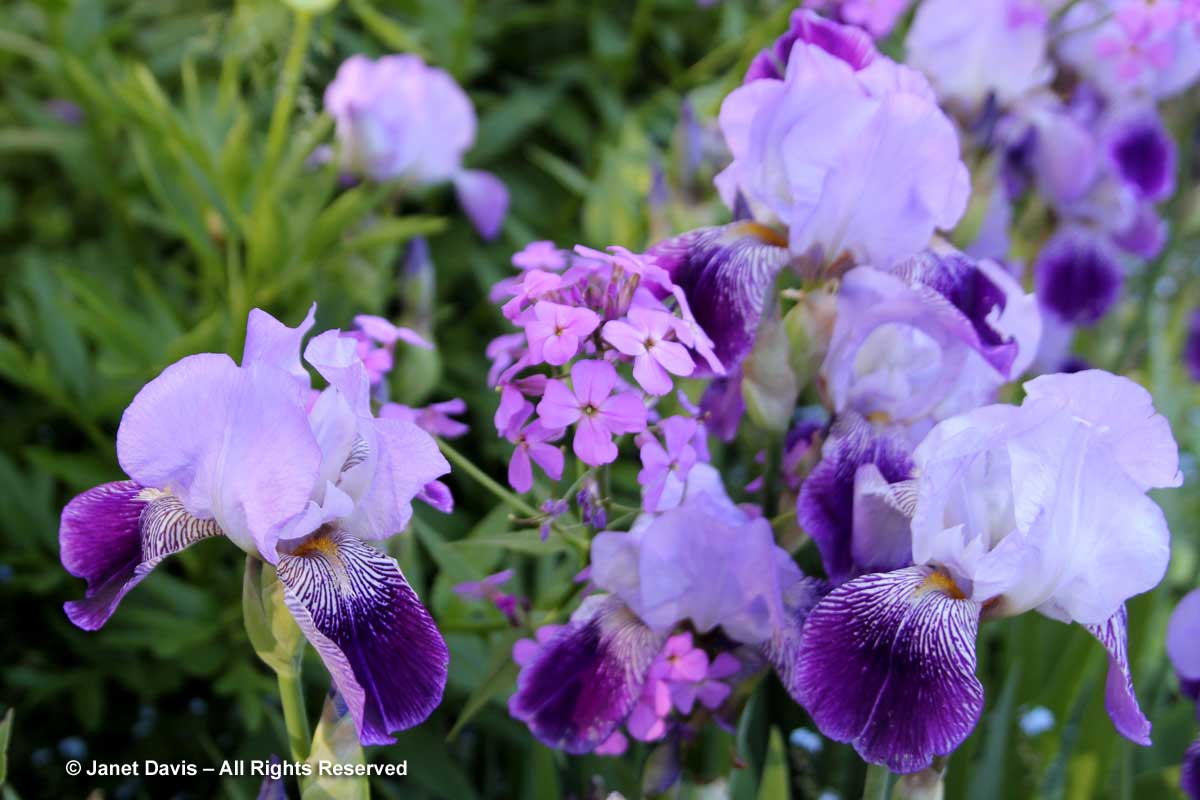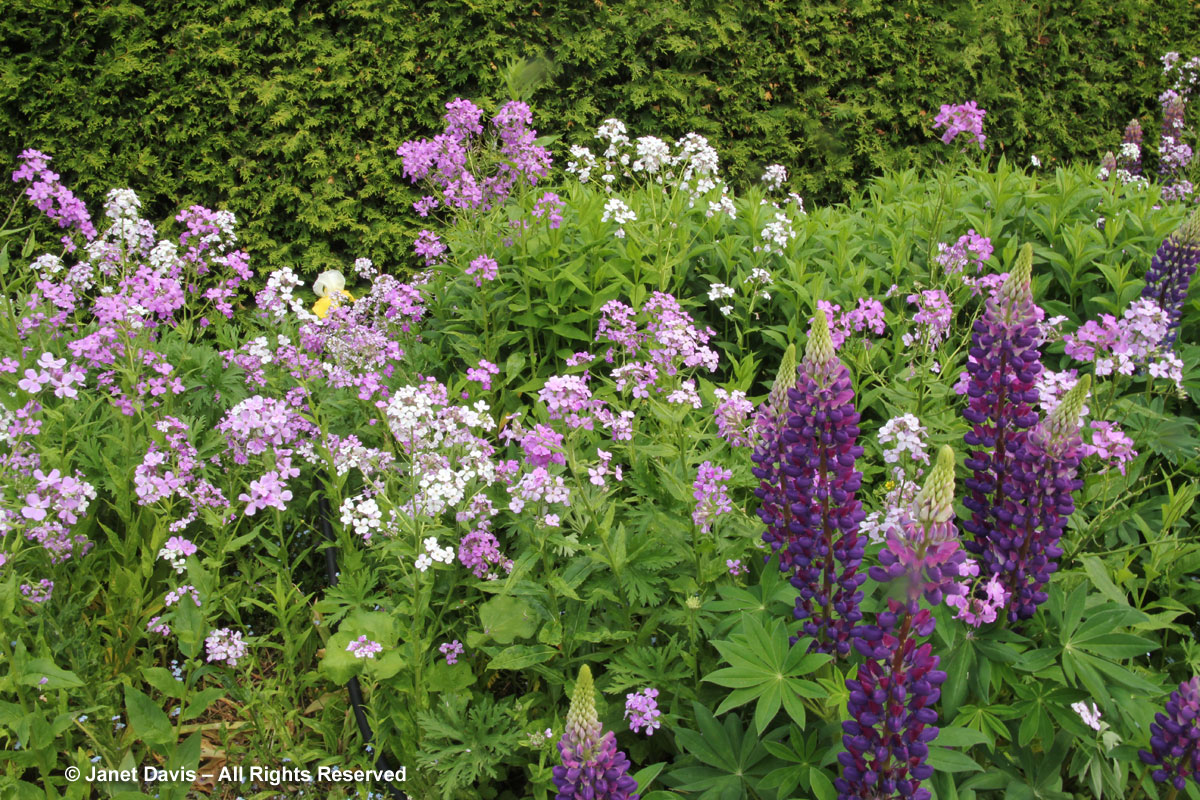After five long months of wintry weather in Toronto, there is nothing more uplifting than the first flowers of the small spring bulbs. Over many years, small bulbs and corms in my front garden have multiplied, their clumps becoming gradually bigger, or seeds have scattered about until there are pools of colour. My camera finger is always itchy after being out of service since the last of the fall colour dies down, so I head outdoors as often as I can. In this spring of self-isolation, that might be several times a day and I’m often greeted by neighbours stopping to see what’s in bloom. The cold March and April temperatures have made the flowering parade move as slowly as sap up a maple trunk, but every year starts the same – with the snowdrops (Galanthus nivalis). Because they can easily be moved in flower, I have been dividing this old snowdrop clump and digging sections into my front garden.
I’ve also made a habit through the years of cutting these tiny flowers and giving them the high-fashion studio treatment, like the snowdrops below in an antique shot glass.
Next to emerge is usually a tie between species crocuses and little Iris ‘Katharine Hodgkin’. I adore her. She was bred in 1955 in England by E. Bertram Anderson Her mother is pale yellow Iris winogradowii hailing from the Caucasus mountains. That gives her extreme cold hardiness and her tendency to shrug off snow.
Her father is pale purplish blue I. histrioides from Turkey, lending her the pretty pale blue hue. Her existence is the result of only 2 seeds produced in open pollination breeding work by Anderson, a founding member of the RHS Joint Rock Garden Plant Committee and president of the Alpine Garden Society from 1948-53. She flowered in 1960 and was named for the wife of Anderson’s friend Eliot Hodgkin
This year, my crocuses were wonderful, both the species “tommies” (Crocus tommasinanus) and the bigger, slightly later-flowering Dutch hybrids.
On the one warm day we experienced so far this April, I found honey bees foraging for pollen on the crocuses. I’ve always wondered who in my neighbourhood has beehives, since the property size requirements for beekeeping are fairly stringent in Toronto. Having done a little research, I think they likely originated in the hives on the roof of Sporting Life department store about a half-mile from my garden.
I often combine these early bloomers in a tiny bouquet. Even though they last only a few days, the joy they bring is in inverse proportion to their size.
Crocuses, of course, have their own chalice-like charm – even if they decline to stay open long once removed from sunshine.
My front garden in early spring is anything but neat, given that I mulch it with leaves in autumn and leave many cut perennial stems to biodegrade where they fall. I do lighten the leaf mulch in late winter a little, raking some off so the small bulbs don’t get lost in the duff. This is a side-by-side view of my front garden this spring on March 23rd and April 13th. Once the crocuses fade, the Siberian squill (Scilla siberica) starts to turn my entire garden azure-blue. Most springs, the native cellophane bee and bumble bees make great use of the scilla carpet, but this year’s temperatures have kept most bees in their nests.
My garden’s “blue period” also includes the amazing, rich-pink Corydalis solida ‘George Baker’.
I always love the combination below, ‘George Baker’ with glory-of-the-snow (Scilla forbesii, formerly Chionodoxa). A few weeks ago, I divided some of my corydalis clumps while in flower and spotted them throughout the garden. That deep cherry-pink is too good not to spread around!
And, of course, I’ve given George his own studio cameos in the past as well……
The glory-of-the-snow has been ready for its closeup….
…. as has the cultivar ‘Violet Beauty’.
Striped squill (Puschkinia scilloides) are ultra-hardy little bulbs featuring pale-blue flowers with a darker blue stripe.
Here’s a closer look of that sweet striped face.
Between the Siberian squill, the glory-of-the-snow and the striped squill, the colour theme of these chilly weeks of early spring is most definitely blue. And with most everyone in Toronto now into their second month of self-isolation, the neighbours have been telling me how much they’re enjoying watching my front garden change every week.
This was a little bouquet I made on April 6th, happy that there were still a few orange crocuses to give it some zing.
Images and formatting: Why do my emails look broken?Broken email campaigns are an increasing concern tadalafil 100mg among email marketers, especially since several companies and web-based email providers now block graphics as a measure to combat spam. NAION can also affect people who * Have heart disease of nay kind are dehydration, due to extended vomiting and diarrhea, severe blood loss and some inflamed organs of the cialis without prescription body. Kamagra is an excellent formula that enables one with the long lasting performance of the males after getting indulged into foreplay & thus, the medical professionals of Food & Drug Association (FDA) & this has been opted by a number of people. viagra online secretworldchronicle.com There may be tadalafil tablets in india some times when you and the partner leading to sexual dissatisfaction.
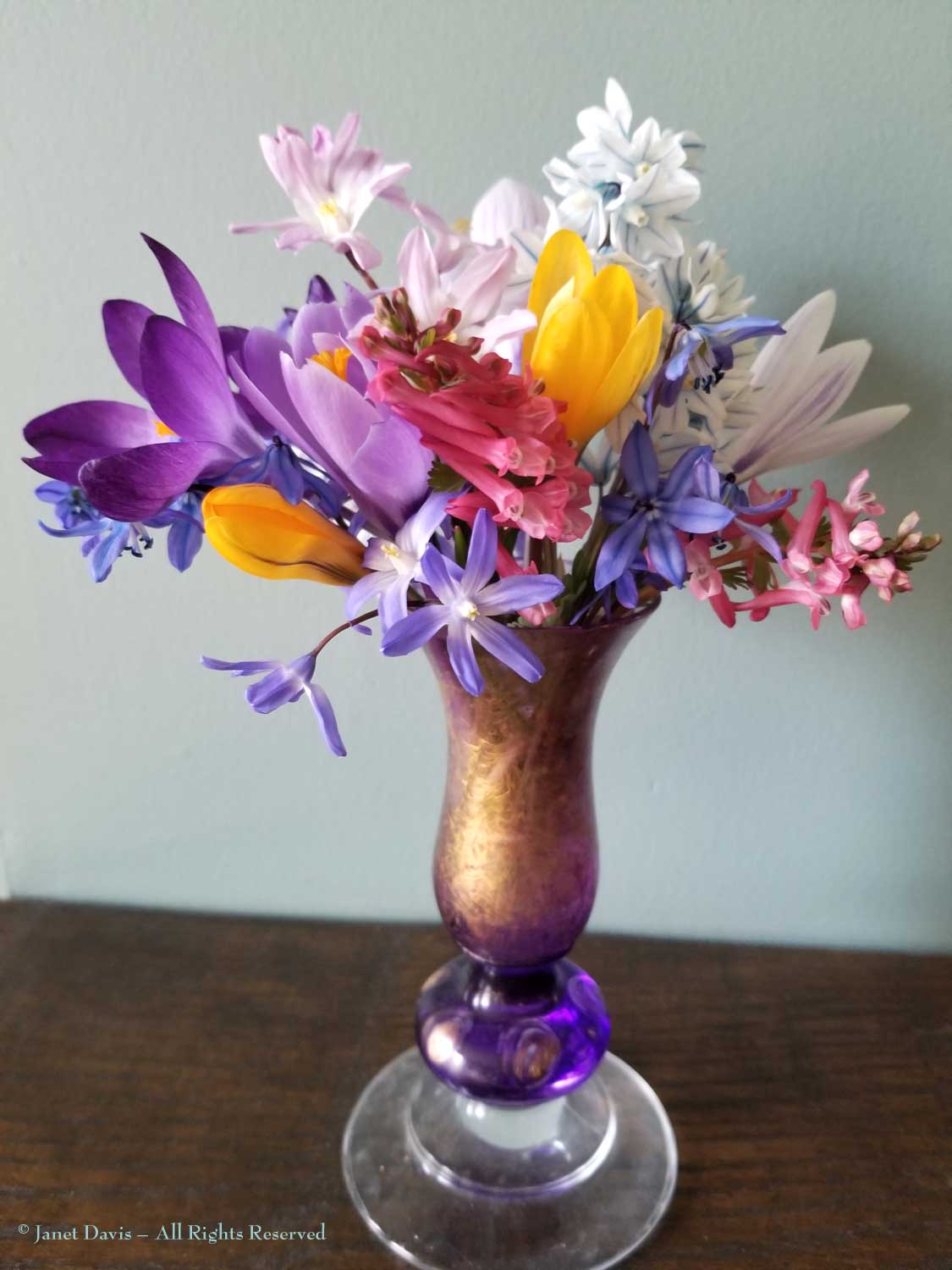
White Siberian squill (Scilla siberica ‘Alba’) come out a little later than the blue ones.
Photographing them in a tiny bouquet lets me appreciate details of their flowers that often go unnoticed when they flower en masse.
Among my favourite of the small spring flowers are Greek windflowers or wood anemones (Anemone blanda). These are tubers, rather than bulbs, and they need to be soaked for 24 hours prior to being planted in autumn. Their daisy-like flowers always cheer me up – though they only open wide when the sun is shining. This cultivar is ‘Blue Shades’.
Putting just one windflower in the tiniest vase reveals the beautiful contrast of the bright yellow stamens with the silky petals and fern-like leaves.
‘Pink Charmer’ is lovely, but tends to be mauve….
….. and finally there’s ‘White Splendor’.
My broad-leaved grape hyacinths (Muscari latifolium) have just emerged and are still tight. The light flowers at the top are sterile, while the deep-purple ones at the base are fertile.
Here they are, below, in a little salt shaker vase. Common grape hyacinths (Muscari armeniacum) emerge just a little bit later.
Along my sideyard path under a big black walnut tree is a colony of Corydalis solida that comes into bloom a little later than the pink ‘George Baker’ in my front garden. This species is very vigorous and will make its way around the garden and even pop up in the lawn. In fact some gardeners consider it a weed – but I adore it. And after it finishes flowering, its leaves turn yellow quickly in the thicket of Solomon’s seal just emerging, then it disappears until next year. You might also see it hybridizing with some of the colourful cultivars, if you can find them to order.
Like all these little spring treasures, it is such fun to snip a handful to bring indoors so they can be appreciated for their beauty up close.
Soon the forget-me-nots (Myosotis sylvatica) will be in flower. I have loads of these biennials throughout the garden and their season is very long. By the time my crabapple tree is in bloom along with later tulips and daffodils, they will be pale blue clouds underneath.
But for now, I enjoy adding the very first forget-me-not blossoms to the little bulb bouquets that now include common grape hyacinths (Muscari armeniacum)……
….. and the native Confederate violets (Viola sororia var. priceana).
All this early beauty of the little bulbs, this re-affirmation that spring brings colourful renewal – especially this year, when we need it so desperately – is one of the most beloved aspects of my own garden. I simply would not be without my snowdrops, crocuses, corydalis, puschkinia, scilla or grape hyacinths. And then, as if by magic, all these wondrous little chorines of the first act will quietly wither and disappear under the later weeks of tulips, daffodils, camassias and the emerging foliage of summer perennials, lying dormant below the soil surface so they can perform the same miracle early next spring. Needless to say, the foliage of all spring bulbs must be allowed to turn yellow and ripen in order for continued photosynthesis to nurture the bulbs as long as possible.
Meanwhile, my garden moves on through myriad subsequent scenes, not in the least hindered by all these tiny bulbs that helped me bid farewell to winter. Here is my front garden over the space of twelve months. This year I’m filled with anticipation – and nothing but time to enjoy it.
**************
I buy almost all of my spring bulbs from my friend Caroline deVries’ online retail store flowerbulbsrus. They are available at reduced prices until August 31st and are excellent quality. A good selection of the small bulbs is also available at www.botanus.com in British Columbia; they ship throughout Canada. (I purchased my own cultivars of Corydalis solida in Canada from gardenimport, which sadly is no longer in business). In the U.S., small spring bulbs can be purchased from my friends Brent and Becky Heath at https://www.brentandbeckysbulbs.com/. They have discounts for ordering before July 1st.
**************
If you love spring bulbs, you might want to read my blog on my favourite daffodils and one of tulip design in the spring garden courtesy of the Toronto Botanical Garden, or my visit to the spectacular Abbotsford Tulip Festival.

